Category: Nepal
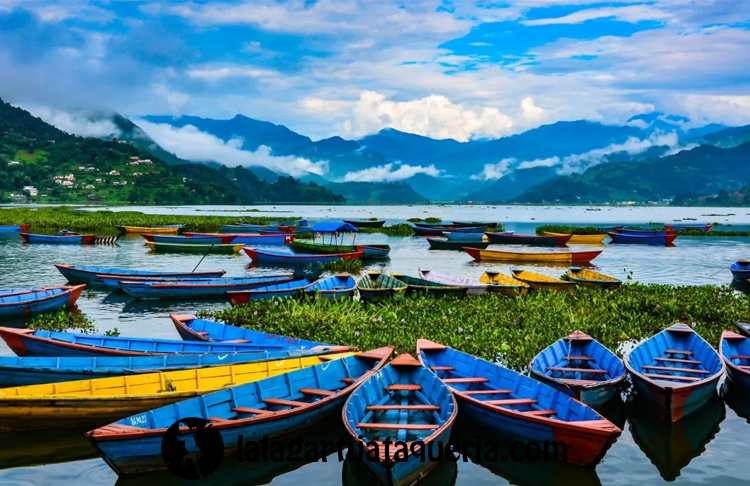
Amazing Places to Travel in Nepal for Every Adventure Seeker
Nepal, a country known for its stunning landscapes and rich cultural heritage, is a must-visit destination for any traveler. With its towering Himalayas, ancient temples, and serene valleys, there are countless places to travel in Nepal that promise adventure and spiritual enrichment. Whether you’re drawn to the historical treasures of Kathmandu or the natural beauty of Pokhara, Nepal offers a variety of experiences for all kinds of travelers. Among the most famous places to travel in Nepal is the Kathmandu Valley, a UNESCO World Heritage Site that houses centuries-old temples and monuments. In this blog post, we will explore some of the best places to travel in Nepal, focusing on cultural landmarks, historical treasures, and natural beauty that make this country so enchanting.
Discover the Best Places to Travel in Nepal
Nepal is a land of diversity, offering a mix of breathtaking natural scenery, historic temples, and vibrant cultural experiences. The country has something for everyone, from trekking through the rugged Himalayan mountains to exploring bustling cities filled with centuries-old palaces and shrines. For those looking to immerse themselves in Nepal’s rich history and spirituality, places to travel in Nepal like the Kathmandu Valley, Lumbini, and Chitwan National Park are must-visit spots. Whether you’re an adventure seeker, a history buff, or someone seeking peace in nature, the places to travel in Nepal promise unforgettable memories. Let’s dive deeper into some of the most iconic destinations starting with Kathmandu Valley.
Kathmandu Valley: A Cultural and Historical Hub
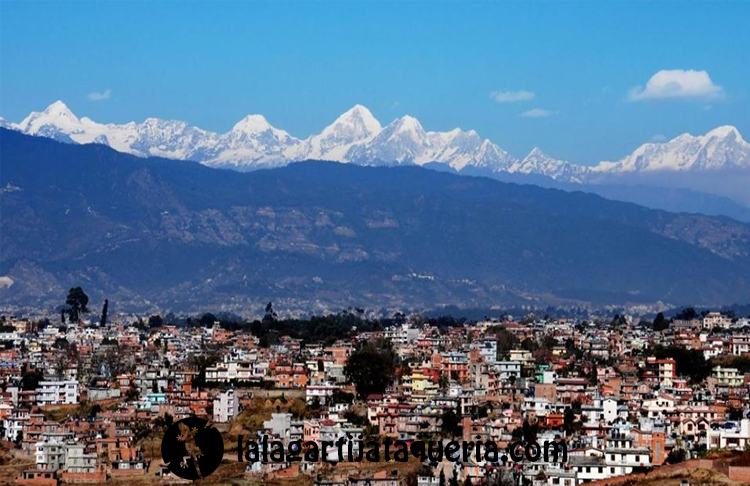
The Kathmandu Valley, home to Nepal’s capital, is a treasure trove of ancient architecture and cultural heritage. This region offers some of the best places to travel in Nepal, where you can explore centuries-old temples, stupas, and palaces that have stood the test of time. The valley is also a hub of religious diversity, where Hinduism and Buddhism co-exist harmoniously, evident in the numerous temples and stupas scattered across the region. Here, you will find bustling markets, intricately carved wooden palaces, and tranquil monasteries—all contributing to the valley’s vibrant atmosphere.
As you explore the valley, you will encounter some of the most significant places to travel in Nepal, including Kathmandu Durbar Square, Pashupatinath Temple, and the Swayambhunath Stupa. Each of these landmarks tells a unique story, reflecting the region’s deep historical and religious roots.
Kathmandu Durbar Square: Witness Ancient Architecture
Kathmandu Durbar Square is one of the most historically rich places to travel in Nepal, offering visitors a glimpse into the architectural grandeur of the Malla dynasty. The square is a UNESCO World Heritage Site, home to a complex of palaces, courtyards, and temples that date back to the 12th century. This area was once the royal seat of the Kathmandu Kingdom, and today, it stands as a museum of medieval Nepali art and craftsmanship. Here, you can marvel at the intricate wooden carvings, visit the Kumari Ghar (home to the living goddess), and explore the ancient Hanuman Dhoka Palace.
Swayambhunath Stupa (Monkey Temple): Panoramic City Views
Perched on a hilltop overlooking Kathmandu, Swayambhunath Stupa, also known as the Monkey Temple, is another must-see place to travel in Nepal. This iconic Buddhist stupa, believed to be over 1,500 years old, is a symbol of peace and wisdom. The stupa’s white dome and gilded spire are adorned with the eyes of Buddha, watching over the valley. As you ascend the steep steps to the top, you’ll be greeted by playful monkeys and, once you reach the summit, rewarded with breathtaking panoramic views of Kathmandu. It’s one of the most spiritual and scenic places to travel in Nepal.
Pashupatinath Temple: A Sacred Hindu Pilgrimage Site
Pashupatinath Temple is one of the holiest Hindu temples in the world and a significant place to travel in Nepal. Located on the banks of the Bagmati River, this sprawling temple complex is dedicated to Lord Shiva and draws thousands of pilgrims, especially during the Maha Shivaratri festival. The temple’s pagoda-style architecture is a masterpiece of craftsmanship, with beautiful wood and stone carvings adorning its many shrines. Visitors can also witness Hindu funeral rites along the ghats, which adds a deeply spiritual and solemn aspect to this revered site.
Pokhara: Gateway to the Himalayas
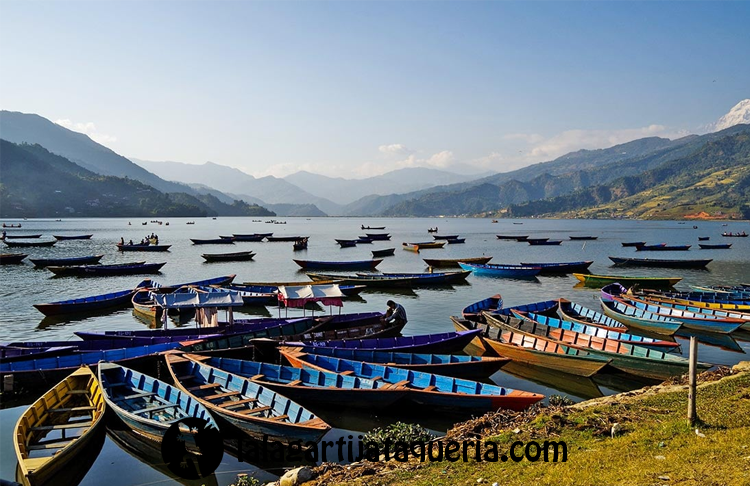
Pokhara, often referred to as the “Gateway to the Himalayas,” is a stunning city that serves as a launch point for some of the best trekking routes in Nepal, including the world-renowned Annapurna Circuit. This serene city offers travelers the perfect combination of natural beauty, cultural heritage, and adventure. With the towering Annapurna and Machapuchare peaks in the backdrop, Pokhara is one of the most breathtaking places to travel in Nepal. Beyond trekking, Pokhara boasts tranquil lakes, hidden caves, and cascading waterfalls, making it a perfect destination for nature lovers and adventure seekers alike.
As you explore Pokhara, you will encounter various natural wonders and adventure activities. From boating on Phewa Lake to exploring the underground wonders of Davis Falls and Gupteshwor Cave, Pokhara provides a unique mix of relaxation and excitement. Let’s dive into some of the top attractions that make Pokhara one of the most visited places to travel in Nepal.
Phewa Lake: Relax by the Tranquil Waters
One of the most picturesque places to travel in Nepal, Phewa Lake offers a peaceful retreat from the hustle and bustle of city life. Surrounded by lush hills and the majestic Annapurna range, this tranquil lake is ideal for boating, kayaking, or simply relaxing by its serene waters. In the middle of the lake, you’ll find the Barahi Temple, a two-storied pagoda-style shrine that adds a touch of spirituality to the scenic beauty of the area.
Visitors can also enjoy a leisurely stroll along the lakeside, where quaint cafés and restaurants provide the perfect spot to watch the sunset over the Himalayas. Whether you’re seeking solitude or a family-friendly activity, Phewa Lake is one of the top places to travel in Nepal for relaxation and natural beauty.
Davis Falls and Gupteshwor Cave: Explore Underground Wonders
For those who love exploring natural landmarks, Davis Falls and Gupteshwor Cave are must-visit places to travel in Nepal. Davis Falls, also known as Patale Chhango, is a powerful waterfall that plunges into an underground tunnel. It is a unique phenomenon, where the waterfall disappears into the ground, making it an unusual sight. Named after a tragic incident where a traveler fell into the waterfall, Davis Falls is both captivating and humbling.
Just across from Davis Falls is Gupteshwor Cave, one of the most famous underground caves in Nepal. This cave is renowned for its stalactites, stalagmites, and a revered Shiva Lingam inside. As you venture deeper into the cave, you will witness the impressive underground waterfall, which is a continuation of Davis Falls. The combination of these two natural wonders makes them unforgettable places to travel in Nepal for anyone seeking adventure.
Annapurna Base Camp: The Ultimate Trekking Adventure
No trip to Pokhara is complete without embarking on a trek to Annapurna Base Camp, one of the most popular places to travel in Nepal for trekking enthusiasts. The trek takes you through a variety of landscapes, from terraced fields to dense forests and alpine meadows, all while offering panoramic views of the snow-capped Annapurna range. Reaching the base camp at an altitude of 4,130 meters is a rewarding experience for hikers, providing a close-up view of the towering Annapurna I and its neighboring peaks.
This multi-day trek is perfect for those seeking adventure and a deeper connection with Nepal’s natural beauty. Along the way, trekkers can also experience the warm hospitality of local Gurung and Magar villages, making the Annapurna Base Camp trek not just a physical challenge but a cultural journey as well. It truly stands out as one of the top places to travel in Nepal for an unforgettable trekking experience.
Lumbini: The Birthplace of Lord Buddha
Lumbini, a UNESCO World Heritage Site, is one of the most sacred places to travel in Nepal for Buddhists and spiritual seekers around the world. As the birthplace of Siddhartha Gautama, who later became Buddha, Lumbini is a spiritual center that draws pilgrims and tourists alike. Located in the Rupandehi District of Nepal, this serene destination is not only significant for its religious importance but also for its tranquil atmosphere. The sprawling gardens, monasteries, and ancient relics make it one of the most revered places to travel in Nepal.
Visitors to Lumbini can immerse themselves in the spiritual history of the site, as it is home to several monuments, temples, and archaeological remains that mark key moments in the life of Lord Buddha. Lumbini’s peaceful ambiance, with prayer flags fluttering in the breeze and the sound of monks chanting, creates an atmosphere that is deeply meditative, making it a must-visit place to travel in Nepal for those in search of inner peace and spiritual reflection.
Maya Devi Temple: A UNESCO World Heritage Site
The Maya Devi Temple, located at the very heart of Lumbini, is perhaps the most significant religious landmark among the places to travel in Nepal. This sacred site marks the exact spot where Queen Maya Devi gave birth to Siddhartha Gautama over 2,500 years ago. Archaeological excavations have revealed ancient ruins dating back to the 3rd century BC, including a sandstone marker that identifies the exact birthplace of Buddha.
The temple complex is surrounded by the Sacred Garden, which is a peaceful and spiritual place for pilgrims and visitors. Visitors can also see the Ashoka Pillar, erected by Emperor Ashoka in 249 BC, which further attests to the historical importance of this site. The Maya Devi Temple is not only a key highlight of Lumbini but also one of the most revered places to travel in Nepal for anyone interested in the life and teachings of Buddha.
Lumbini Monastic Zone: A Spiritual Experience
Another highlight of Lumbini is the Lumbini Monastic Zone, a designated area where various Buddhist nations have built monasteries, creating a global hub of spirituality. This zone, divided into Eastern and Western monastic zones, is home to several beautifully designed temples and monasteries, each representing the unique architectural styles and spiritual traditions of countries like Thailand, Japan, China, and Germany. These monasteries are open to the public, offering an insight into the global influence of Buddhism.
As you walk through the monastic zone, you can meditate or simply observe the serene environment. This part of Lumbini is designed to provide peace and spiritual enlightenment to visitors, making it a must-visit spot for those seeking a deeper connection to Buddhism. With its tranquil surroundings and diverse cultural representations, the Lumbini Monastic Zone stands out as one of the most enriching places to travel in Nepal.
Everest Base Camp: A Once-in-a-Lifetime Trek
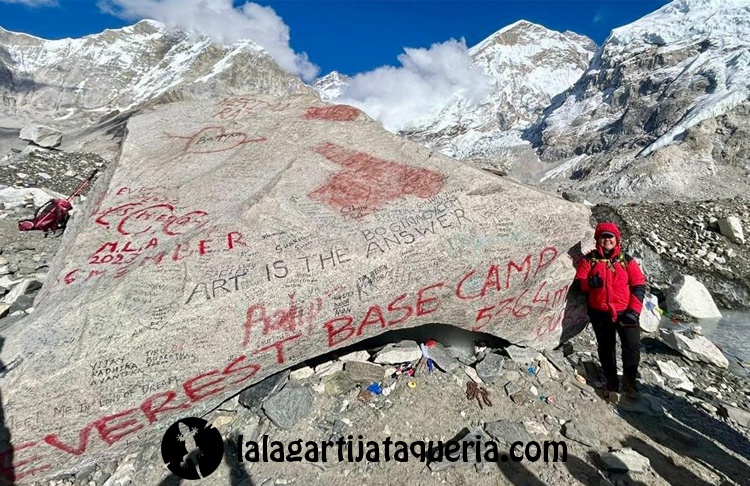
One of the most iconic places to travel in Nepal, Everest Base Camp (EBC) is the ultimate trekking destination for adventurers worldwide. Nestled at an altitude of 5,364 meters, EBC offers trekkers the chance to get up close to the world’s tallest mountain, Mount Everest. The journey to this majestic destination is not just about conquering physical challenges; it’s about immersing yourself in the pristine beauty of the Himalayas, experiencing Sherpa culture, and feeling the grandeur of the mighty peaks that surround you.
The trek takes you through the stunning Khumbu region, where you’ll pass through remote villages, cross suspension bridges over deep gorges, and hike alongside some of the most dramatic landscapes in the world. For many, reaching Everest Base Camp is the pinnacle of their adventure, but the journey itself is just as rewarding, with numerous breathtaking stops along the way that make this one of the most unforgettable places to travel in Nepal.
Khumbu Region: Majestic Views and Sherpa Culture
The Khumbu Region, which encompasses the route to Everest Base Camp, is one of the most captivating places to travel in Nepal. This region is not only home to awe-inspiring views of towering peaks like Ama Dablam and Lhotse, but it also offers a rich cultural experience. The Sherpa people, renowned for their hospitality and mountaineering expertise, live in the high-altitude villages scattered across Khumbu.
During the trek, you will visit famous Sherpa villages like Namche Bazaar, Tengboche, and Dingboche, where you can explore traditional monasteries and learn about the unique customs and traditions of the Sherpa community. Namche Bazaar, in particular, serves as a cultural hub and a resting point for trekkers. The region’s fusion of natural beauty and cultural richness makes it a standout among places to travel in Nepal, offering more than just scenic landscapes—it provides a deep dive into Himalayan life.
Kala Patthar: Best Spot for Everest Sunrise Views
For those seeking the best panoramic views of Everest, Kala Patthar is the ultimate vantage point. Rising to an altitude of 5,545 meters, this rocky outcrop provides an unparalleled view of Mount Everest’s towering summit, especially at sunrise when the first rays of light illuminate the peak. Many trekkers consider Kala Patthar the highlight of their Everest Base Camp journey due to its breathtaking views, which are often described as one of the most surreal experiences among all the places to travel in Nepal.
Climbing Kala Patthar is challenging due to its altitude, but the reward is well worth the effort. From the top, you can also take in stunning views of the surrounding Himalayan giants, including Pumori, Lhotse, and Nuptse. For photography enthusiasts and adventurers alike, Kala Patthar is the perfect spot to capture the beauty and grandeur of Everest and its neighboring peaks.
Chitwan National Park: Nepal’s Wildlife Haven
Chitwan National Park, a UNESCO World Heritage Site, is one of the most captivating places to travel in Nepal for nature lovers and wildlife enthusiasts. Located in the subtropical lowlands of the Terai region, this park offers a stark contrast to Nepal’s mountainous landscapes, presenting lush jungles, grasslands, and wetlands teeming with diverse flora and fauna. Chitwan is famous for its efforts in conservation and is home to several endangered species, including the one-horned rhinoceros, Bengal tigers, and Gharial crocodiles.
For travelers looking to experience Nepal beyond the Himalayas, Chitwan National Park offers a unique opportunity to explore the country’s rich biodiversity. Whether you’re trekking through the dense forests or gliding along the Rapti River, this park is one of the best places to travel in Nepal for those eager to see wildlife up close in its natural habitat.
Jungle Safari: Spot Rhinos, Tigers, and More
One of the highlights of visiting Chitwan National Park is embarking on a jungle safari, which is undoubtedly one of the top places to travel in Nepal for wildlife viewing. The park is home to more than 700 species of wildlife, including the famous one-horned rhinoceros and elusive Bengal tiger. Safaris are conducted either by jeep or on foot, guided by expert naturalists who help visitors navigate the park’s dense jungles and grasslands.
During the safari, you may also encounter other fascinating animals such as sloth bears, wild boars, leopards, and various species of deer. The opportunity to spot these magnificent creatures in the wild makes the jungle safari in Chitwan one of the most exciting places to travel in Nepal for an unforgettable wildlife adventure.
Canoeing and Bird Watching: Experience the Biodiversity
Another must-do activity in Chitwan National Park is a peaceful canoe ride along the Rapti or Narayani Rivers. These canoe trips offer a close-up view of the park’s aquatic life, including the Gharial crocodile, a critically endangered species, and the more common marsh mugger crocodile. This slow-paced journey is perfect for bird watchers, as the park is a haven for over 500 species of birds, such as kingfishers, egrets, and storks.
The calm waters and rich biodiversity make canoeing one of the most serene ways to experience Chitwan’s wildlife. For birdwatchers, Chitwan is one of the top places to travel in Nepal, offering a rare chance to see both resident and migratory birds in a variety of ecosystems within the park. This diverse range of species, from the majestic lesser adjutant to vibrant sunbirds, ensures that visitors will leave with an enriched understanding of Nepal’s unique biodiversity.
Bandipur: A Town Frozen in Time
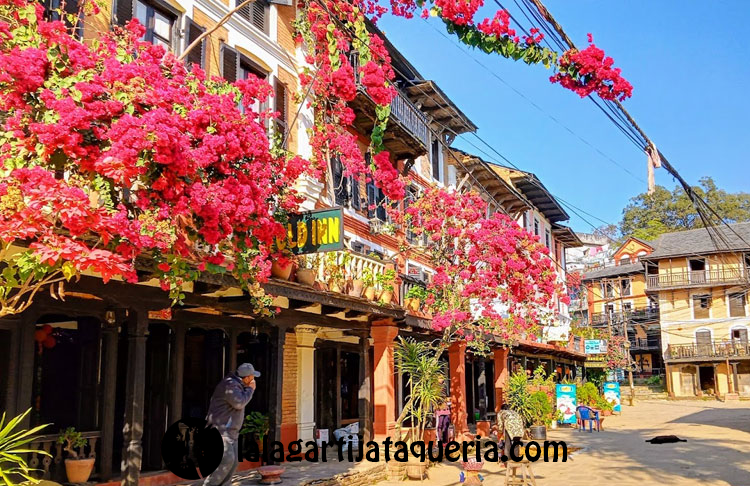
Nestled in the hills of central Nepal, Bandipur is a charming town that feels untouched by modernity, making it one of the most enchanting places to travel in Nepal for those seeking a step back in time. This well-preserved Newari town, perched on a ridge above the Marsyangdi River Valley, offers visitors a unique blend of ancient culture, traditional architecture, and stunning views of the Himalayas. Bandipur’s traffic-free streets, lined with traditional Newari houses and temples, create a timeless atmosphere that draws travelers looking for peace and authenticity.
Bandipur is not only rich in history but also serves as a fantastic vantage point for breathtaking views of the Annapurna and Dhaulagiri mountain ranges. For those who want to experience Nepal’s rich heritage and natural beauty away from the crowded tourist hubs, Bandipur is one of the best places to travel in Nepal.
Explore Ancient Temples and Newari Architecture
One of the main attractions of Bandipur is its stunning collection of ancient temples and Newari architecture, which have been remarkably well-preserved over the centuries. The town’s main street, lined with intricately carved wooden windows and brick facades, reflects the traditional craftsmanship of the Newar people, one of Nepal’s oldest ethnic groups. Walking through these streets is like stepping into a living museum, with temples such as the Bindabasini Temple and Khadga Devi Temple showcasing the town’s religious and cultural significance.
Visitors can explore these sacred sites and experience the spiritual ambiance that has defined Bandipur for centuries. The town’s unique architectural heritage, coupled with its cultural depth, makes it one of the most fascinating places to travel in Nepal for history and culture enthusiasts.
Scenic Views of the Annapurna and Dhaulagiri Ranges
Aside from its rich history and architecture, Bandipur is also known for its panoramic views of the Annapurna and Dhaulagiri mountain ranges. From various viewpoints around the town, visitors are treated to breathtaking vistas of snow-capped peaks, verdant valleys, and terraced farmlands. The sight of these majestic Himalayan giants, especially during sunrise or sunset, is one of the most memorable experiences for travelers visiting this tranquil town.
Whether you’re a nature lover or a photography enthusiast, Bandipur offers some of the most scenic places to travel in Nepal, providing a perfect mix of cultural exploration and natural beauty. The peaceful ambiance and stunning mountain backdrop make it an ideal destination for relaxation and reflection.
Nagarkot: A Photographer’s Dream Destination
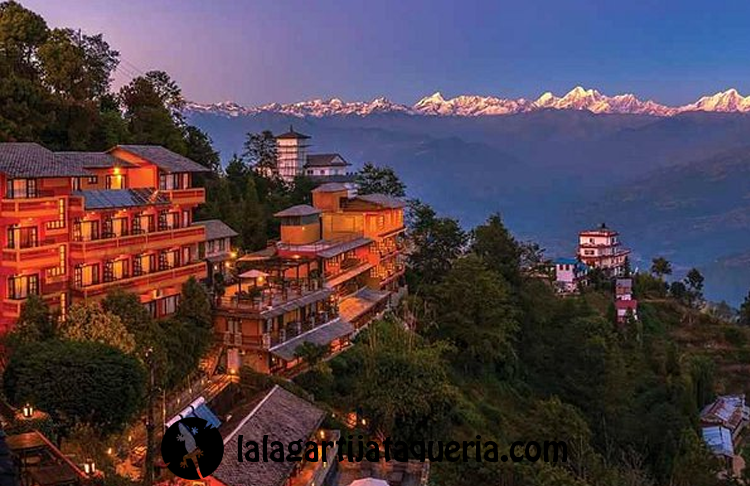
Nagarkot, a serene hilltop village located just outside Kathmandu, is one of the most picturesque places to travel in Nepal, making it a dream destination for photographers. Perched at an altitude of around 2,175 meters, Nagarkot offers some of the best panoramic views of the Himalayan range, including Mount Everest on clear days. Known for its stunning sunrises and sunsets, this quaint village is an idyllic retreat for travelers looking to capture Nepal’s natural beauty in its purest form. Beyond the breathtaking mountain vistas, Nagarkot also offers lush landscapes, terraced fields, and charming village scenes that make it one of the most photogenic places to travel in Nepal.
For those seeking tranquility and beautiful landscapes away from the city’s hustle and bustle, Nagarkot provides an escape into nature, with a peaceful ambiance that is perfect for both photography enthusiasts and nature lovers. Whether you’re here to hike or simply soak in the scenery, Nagarkot is a must-visit destination for anyone exploring the places to travel in Nepal.
Sunrise Over the Himalayas: A Must-See View
One of the most magical experiences in Nagarkot is witnessing the sunrise over the Himalayas. The early morning light transforms the snow-capped peaks into a palette of warm hues, creating a spectacular scene that attracts photographers and tourists alike. On a clear day, visitors can see several Himalayan peaks, including Mount Everest, Dhaulagiri, and Kanchenjunga, making this sunrise one of the most unforgettable moments at any of the places to travel in Nepal.
The observation tower in Nagarkot is a popular spot to catch the sunrise, providing panoramic views that stretch as far as the eye can see. The surreal beauty of the sun rising over the majestic mountains is something every traveler should experience at least once, cementing Nagarkot as a top place to travel in Nepal for sunrise chasers.
Hiking Trails Around Nagarkot: For Nature Lovers
Nagarkot is not just about panoramic mountain views; it also offers a variety of hiking trails that lead through forests, villages, and ridges, making it a perfect destination for nature lovers. Several well-marked trails provide a great opportunity to explore the local flora and fauna, with paths leading to nearby villages such as Changunarayan, Sundarijal, and Dhulikhel. These hikes offer trekkers the chance to experience local life in rural Nepal while being surrounded by stunning landscapes.
One of the most popular hikes is the Nagarkot to Changunarayan trek, which takes you through beautiful terraced fields, traditional villages, and ancient temples. This moderate hike is ideal for travelers looking to combine cultural exploration with the natural beauty of Nepal. For those seeking outdoor adventure amidst breathtaking scenery, the hiking trails around Nagarkot are among the best places to travel in Nepal.
Conclusion
Nepal is truly a land of endless discovery, offering travelers a diverse range of experiences, from trekking through the world’s highest peaks to exploring ancient temples and serene landscapes. Whether you are seeking adventure, cultural enrichment, or simply a peaceful retreat, the places to travel in Nepal provide an unforgettable journey. From the bustling streets of Kathmandu to the tranquil waters of Phewa Lake and the awe-inspiring sights of Everest Base Camp, every destination in Nepal has its own unique charm and beauty.
For nature lovers, history buffs, and spiritual seekers alike, Nepal is a destination that leaves a lasting impression. With its rich culture, breathtaking landscapes, and warm hospitality, it’s no wonder that the places to travel in Nepal continue to captivate travelers from all over the world. Whether you’re planning your first trip or a return visit, these remarkable locations are sure to inspire and delight.

Exploring Nepal What to Do: Trekking, Culture, and More
Nepal, a land nestled between the majestic peaks of the Himalayas, is a dream destination for adventurers, culture enthusiasts, and nature lovers. From trekking through some of the world’s highest mountains to exploring ancient temples in vibrant cities, Nepal offers experiences that cater to all kinds of travelers. If you’re planning a visit and wondering Nepal what to do, you’ll find that this country offers a perfect blend of adventure, spirituality, and cultural immersion.
In this guide, we’ll explore some of the most exciting activities and must-visit places in Nepal, from the stunning trekking routes to the historical charm of Kathmandu. Here’s what you can look forward to during your Nepal journey.
Trekking the Majestic Himalayas
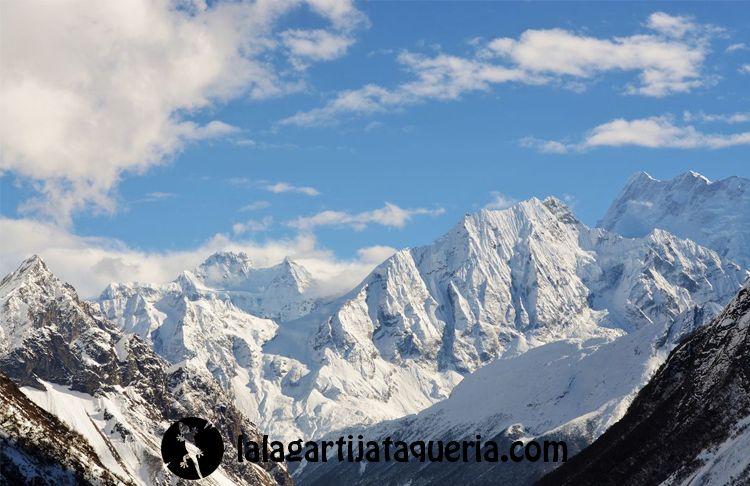
One of the primary reasons travelers visit Nepal is to experience the Himalayan trekking routes, home to some of the most awe-inspiring landscapes on Earth. Whether you’re a seasoned trekker or a beginner, there’s a trail for every skill level, and no matter which route you choose, you’ll find yourself surrounded by breathtaking mountain views and charming villages.
The Everest Base Camp Trek is undoubtedly the most iconic. This adventure takes you through quaint Sherpa villages, lush valleys, and rugged terrain, all while offering jaw-dropping views of Mount Everest. The trek can take around 12-14 days, depending on your pace and acclimatization needs. For those who prefer a shorter yet equally scenic trek, the Annapurna Circuit is a perfect alternative, providing spectacular views of Annapurna and Dhaulagiri ranges.
Not a fan of long treks? You can also opt for day hikes around Pokhara, a scenic city surrounded by lakes and mountain views. It’s the perfect place for first-time trekkers or those with limited time who still want to experience the Himalayan magic.
Explore the Cultural Heritage of Kathmandu

Kathmandu, Nepal’s bustling capital, offers an entirely different yet equally captivating experience. If you’re pondering Nepal what to do besides trekking, exploring the cultural heritage of Kathmandu should be high on your list. The city is a vibrant blend of ancient history and modern life, where centuries-old temples stand beside busy markets and colorful streets.
At the heart of Kathmandu lies the Kathmandu Durbar Square, a UNESCO World Heritage Site. This historical area is home to ancient temples, courtyards, and palaces that date back to the medieval era. One of the highlights is the Kumari Ghar, the residence of the living goddess Kumari. Don’t miss the opportunity to visit Swayambhunath Stupa, also known as the Monkey Temple, for panoramic views of the valley and to immerse yourself in Buddhist culture.
For a deeper understanding of the religious practices in Nepal, head to Pashupatinath Temple, one of the holiest Hindu temples in the world, dedicated to Lord Shiva. Located on the banks of the Bagmati River, this temple offers a fascinating insight into Hindu rituals and culture.
Must-Visit Sites in Kathmandu
- Kathmandu Durbar Square: A hub of ancient architecture, including Hanuman Dhoka Palace and the intricately carved Jagannath Temple.
- Swayambhunath (Monkey Temple): This iconic Buddhist stupa offers stunning views of the city and a serene atmosphere for spiritual reflection.
- Pashupatinath Temple: As one of the most sacred Hindu temples, it’s a must-visit, especially during festivals when thousands of devotees gather.
- Boudhanath Stupa: Another UNESCO site, it is one of the largest stupas in the world and a focal point for Tibetan Buddhism in Nepal.
Discover Wildlife at Chitwan National Park
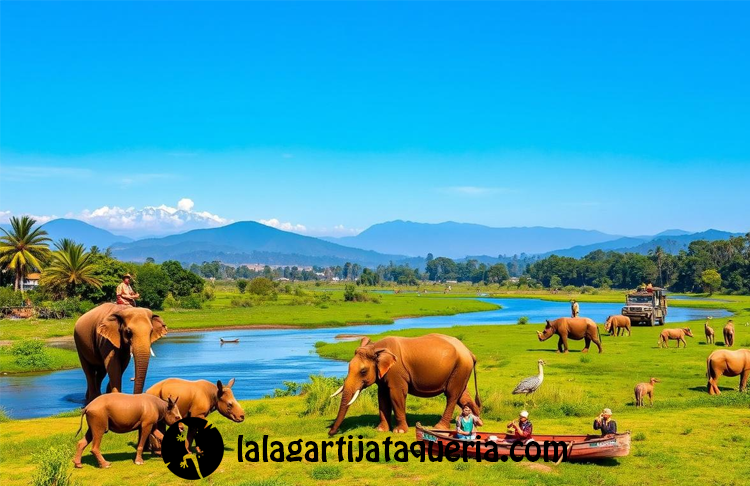
Chitwan National Park, a UNESCO World Heritage Site and Nepal’s first national park, is an ecological treasure located in the Terai region. If you’re wondering Nepal what to do when it comes to wildlife experiences, this park should be at the top of your list. With over 932 square kilometers of diverse ecosystems—including dense forests, grasslands, and wetlands—Chitwan is home to some of the world’s most fascinating wildlife.
The park is famed for its population of one-horned rhinoceroses and Bengal tigers, but that’s just the beginning. You can also encounter elephants, deer, sloth bears, and over 500 species of birds during your visit. A jeep safari or walking safari offers close-up views of these incredible creatures in their natural habitat. Additionally, the Rapti River canoe ride allows you to spot crocodiles while enjoying the park’s serene aquatic landscapes.
Chitwan is also home to the Tharu people, an indigenous group whose culture is deeply tied to the land. Many visitors choose to stay in eco-friendly lodges or Tharu homestays to experience traditional village life, complete with cultural performances and authentic cuisine. Whether you’re here for the wildlife or the cultural immersion, Chitwan National Park offers a truly unique slice of Nepal’s natural beauty.
Visit the Birthplace of Buddha in Lumbini
If you’re looking for spiritual exploration while considering Nepal what to do, visiting Lumbini, the birthplace of Lord Buddha, is a must. Situated in southern Nepal, Lumbini is a sacred pilgrimage site for Buddhists around the world. The Maya Devi Temple, which marks the exact spot where Buddha was born, is the centerpiece of the area, surrounded by monasteries and meditation centers built by Buddhist communities from around the globe.
Lumbini offers more than just religious significance; it’s a tranquil area where visitors can reflect and meditate. The Lumbini Garden, a UNESCO World Heritage Site, is a peaceful place to explore with its large, serene pond and sacred Bodhi tree. You can also visit the World Peace Pagoda, which adds to the spiritual ambiance of this ancient site. Lumbini is not only a place for devout Buddhists but also for anyone seeking peace, reflection, and a deeper understanding of Nepal’s spiritual heritage.
Adventure Sports in Pokhara
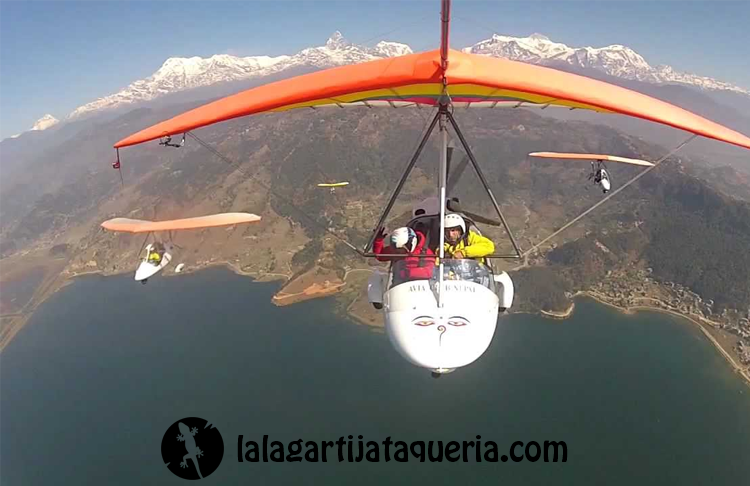
Pokhara is a renowned adventure hub, drawing thrill-seekers from around the world with its wide range of activities set against the stunning backdrop of the Himalayas. If you’re exploring Nepal what to do, particularly in Pokhara, you’ll find plenty of high-adrenaline sports that cater to all levels of adventurers. From soaring through the skies on a paraglider to rafting through the rapids of the Seti River, Pokhara offers both excitement and natural beauty.
For those looking for the ultimate rush, paragliding over the Pokhara Valley is an unforgettable experience. Launching from Sarangkot Hill, paragliders enjoy panoramic views of the Annapurna and Machhapuchhre mountains, as well as the serene Phewa Lake below. If you’re seeking more daring adventures, consider bungee jumping from a 70-meter-high platform into a scenic gorge or taking on the ZipFlyer, one of the steepest and longest zip lines in the world.
For water enthusiasts, white-water rafting on the Seti River provides thrilling rapids paired with serene moments of floating through lush landscapes. Alternatively, an ultralight flight offers an aerial tour of the region, allowing you to glide above the lakes and mountains for a once-in-a-lifetime view of the Himalayas.
Top Activities in Pokhara
- Paragliding: Soar over the Pokhara Valley with breathtaking views of the Himalayas.
- Bungee Jumping: Take the plunge from a 70-meter tower surrounded by stunning natural scenery.
- White-Water Rafting: Navigate the thrilling rapids of the Seti or Trishuli rivers.
- Zip Lining: Experience the rush of speeding through the sky on one of the world’s longest and steepest zip lines.
- Ultralight Flight: Enjoy a peaceful yet exhilarating flight over Pokhara’s iconic landscapes.
Experience the Serenity of Nepal’s Hill Stations
Beyond its adventure offerings, Nepal is also home to serene hill stations that provide a peaceful escape into nature. If you’re considering Nepal what to do for relaxation, the country’s hill stations are the perfect retreat. These picturesque destinations offer tranquil environments, breathtaking views, and cooler climates, ideal for unwinding and soaking in the beauty of the Himalayas.
Popular hill stations like Nagarkot and Dhulikhel, located near Kathmandu, are known for their panoramic views of the Himalayas, particularly during sunrise and sunset. Bandipur, another scenic destination, is a traditional village that offers a blend of cultural heritage and natural beauty. Visitors can hike, explore the local culture, or simply relax while taking in the magnificent mountain vistas. These hill stations provide an opportunity to enjoy Nepal’s natural beauty at a slower pace, away from the hustle and bustle of city life.
In conclusion, Nepal is a destination that offers a perfect blend of adventure, culture, and tranquility. Whether you’re trekking through the Himalayas, exploring the historical charm of Kathmandu, or seeking thrills in Pokhara, the experiences are truly unforgettable. If you’re still wondering Nepal what to do, the country’s diverse landscapes and rich heritage ensure there’s something for every traveler.
From the peaceful hill stations like Nagarkot to the heart-pounding adventure sports in Pokhara, Nepal promises an unparalleled journey filled with natural beauty and cultural richness. No matter what your travel style is, Nepal’s wonders will leave you with lasting memories and a deep appreciation for its majestic landscapes and warm people.
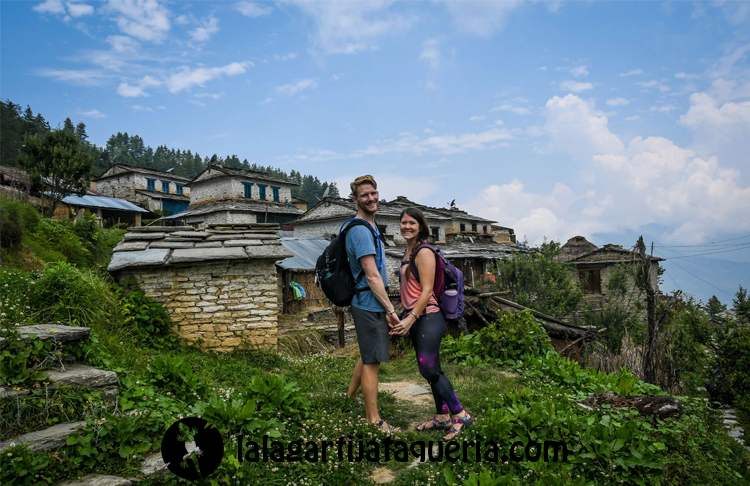
What You Need to Know Before Traveling to Nepal
Traveling to Nepal is an adventure of a lifetime, offering diverse landscapes, from the towering peaks of the Himalayas to lush jungles and bustling cities rich in culture. Whether you’re seeking thrilling treks, peaceful monasteries, or wildlife safaris, Nepal has something for everyone. Traveling to Nepal requires careful planning, especially to ensure you visit during the right season to maximize your experience. This guide will help you navigate the best times to go, what to expect during high and low seasons, and how to make the most of your journey.
Best Time to Visit Nepal
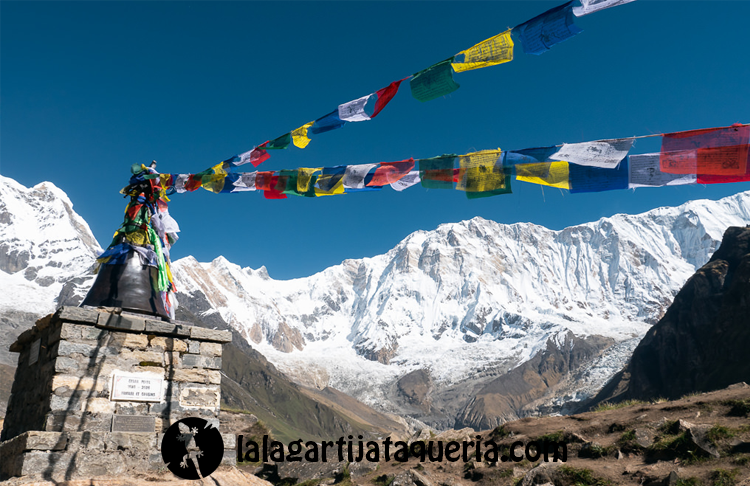
Nepal experiences four main seasons: winter, spring, summer, and autumn. The best time for traveling to Nepal depends largely on your activities. Trekking enthusiasts should aim for autumn (September to November) or spring (March to May), when the weather is clear and the scenery is stunning. Those who wish to explore cultural landmarks, jungles, or historical cities like Kathmandu will also find these periods most enjoyable. But even outside these peak times, traveling to Nepal offers unique experiences, from vibrant festivals to quiet nature retreats.
High Season (September to November)
Autumn, from September to November, is widely considered the peak season for traveling to Nepal. This period offers clear skies, making it perfect for trekking in the Himalayas, especially on popular routes like Everest Base Camp or the Annapurna Circuit. The moderate temperatures and post-monsoon lush greenery enhance the breathtaking mountain views, attracting thousands of adventurers.
During these months, you can also experience vibrant local festivals such as Dashain and Tihar, providing a unique cultural immersion. However, because it’s the high season, it’s essential to book accommodations and permits in advance, as tourist spots can become crowded. If you’re planning on traveling to Nepal for trekking, this is the best time, but be prepared for busy trails.
Low Season (June to August)
The low season, from June to August, coincides with Nepal’s monsoon period. During these months, traveling to Nepal comes with challenges, especially for trekkers, as heavy rains can make trails muddy and dangerous. Landslides are also a concern in some areas, making transportation tricky. However, this period offers a quieter, more intimate experience of Nepal, as fewer tourists visit.
For those interested in cultural tourism or wildlife safaris, the monsoon season still offers some highlights. Places like Chitwan National Park become lush and vibrant, with opportunities to see rare animals in their natural habitats. If you don’t mind the rain and prefer fewer crowds, traveling to Nepal during this time can be a rewarding experience at a lower cost.
Top Destinations in Nepal
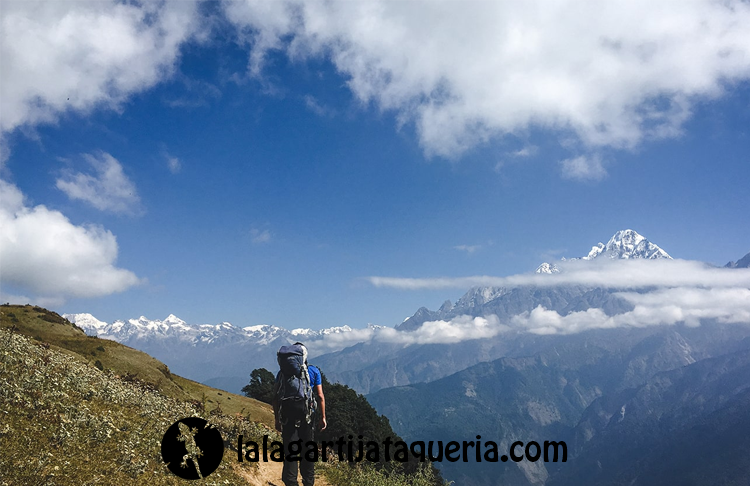
When traveling to Nepal, the country offers a variety of incredible destinations, each with its own unique appeal. From the cultural wonders of Kathmandu to the breathtaking mountain views in Pokhara, and the rich wildlife in Chitwan, there’s something for every type of traveler. Whether you’re interested in trekking, exploring ancient temples, or immersing yourself in nature, traveling to Nepal provides diverse experiences that will leave a lasting impression.
Kathmandu – The Heart of Nepal
Kathmandu, the bustling capital, is often the first stop for travelers. As the cultural and historical heart of the country, it offers a fascinating blend of ancient traditions and modern city life. Durbar Square, a UNESCO World Heritage Site, is a must-see, filled with palaces, courtyards, and temples that date back centuries. Swayambhunath (the Monkey Temple) and Boudhanath Stupa are iconic religious sites that reflect Nepal’s deep spiritual heritage.
While traveling to Nepal, Kathmandu serves as a gateway to understanding the country’s rich history and spirituality. The vibrant Thamel district is also a favorite among tourists, offering a variety of restaurants, shops, and guesthouses. Make sure to immerse yourself in the local culture, and don’t miss out on trying local delicacies like momos and dal bhat.
Pokhara – The Gateway to the Himalayas
If you’re traveling to Nepal for trekking or outdoor adventures, Pokhara is a destination you can’t miss. Often called the “Gateway to the Himalayas,” Pokhara is the starting point for treks like the Annapurna Circuit and Poon Hill. The city itself is set against the backdrop of towering mountains and serene lakes, making it a peaceful retreat for both adventurers and those seeking relaxation.
Fewa Lake is a central attraction where visitors can enjoy boating with stunning views of the Annapurna range. The city also offers paragliding, zip-lining, and ultralight flights for those looking for a thrilling experience. Pokhara is the perfect place to unwind before or after a challenging trek, offering scenic beauty and a calm atmosphere.
Chitwan National Park – A Wildlife Paradise
For nature lovers, traveling to Nepal wouldn’t be complete without a visit to Chitwan National Park. This UNESCO World Heritage Site is home to a wide range of wildlife, including Bengal tigers, one-horned rhinoceroses, elephants, and more than 500 species of birds. The park offers jeep safaris, jungle walks, and canoe rides, providing visitors with an immersive wildlife experience.
Chitwan’s lush landscapes and biodiversity make it one of the best places in Asia for wildlife spotting. Whether you’re hoping to catch a glimpse of the elusive tiger or enjoy a tranquil canoe ride along the Rapti River, Chitwan National Park is a must-visit destination for any nature enthusiast traveling to Nepal.
Lumbini – Birthplace of Buddha
Lumbini is a place of pilgrimage for Buddhists from around the world, as it is recognized as the birthplace of Siddhartha Gautama, who became the Buddha. The serene atmosphere of Lumbini is ideal for spiritual reflection, with various monasteries, temples, and sacred sites to explore. The Maya Devi Temple, which marks the exact birthplace, is a focal point for visitors.
Traveling to Nepal offers a unique opportunity to visit this holy site and witness its spiritual significance. In addition to its religious importance, Lumbini is also a UNESCO World Heritage Site and is surrounded by peaceful gardens and meditation centers, making it a place of tranquility and reflection for all visitors.
Best Treks in Nepal
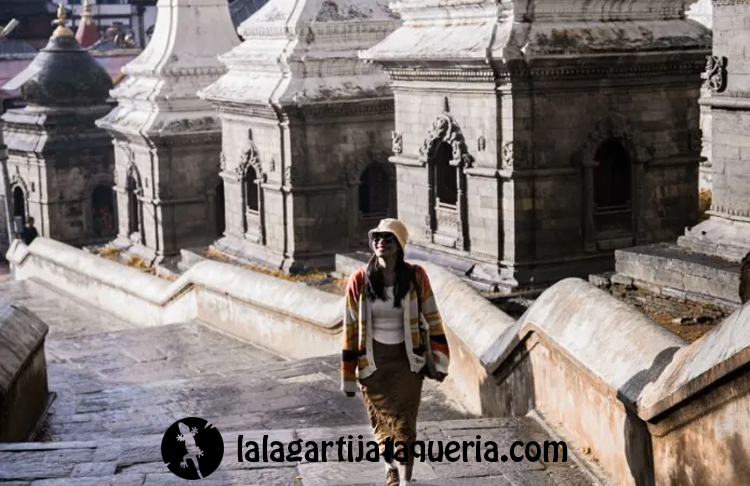
Nepal is a dream destination for trekkers, offering some of the most famous and challenging trails in the world. From routes that take you to the foot of Mount Everest to scenic treks through the Annapurna range, traveling to Nepal provides a variety of treks that cater to all levels of adventurers. Whether you are a seasoned trekker or a beginner looking for a rewarding experience, the trekking routes in Nepal will take you through some of the most breathtaking landscapes on the planet. Below are some of the best treks you can explore while traveling to Nepal.
Everest Base Camp Trek
The Everest Base Camp Trek is one of the most iconic and sought-after adventures for those traveling to Nepal. This challenging trek takes you through the heart of the Khumbu region, offering breathtaking views of the world’s highest peaks, including Mount Everest. Along the way, trekkers pass through Sherpa villages, ancient monasteries, and diverse landscapes, ranging from lush forests to snow-covered mountains.
The trek typically takes around 12-14 days and reaches an altitude of 5,364 meters (17,598 feet) at Everest Base Camp. The journey is physically demanding, but the reward of standing at the foot of Mount Everest is an unforgettable experience. For those traveling to Nepal with a passion for mountaineering and adventure, the Everest Base Camp Trek is a must-do.
Annapurna Circuit Trek
The Annapurna Circuit Trek is another top choice for those traveling to Nepal. This trek offers a diverse experience, taking trekkers through different climate zones, from subtropical forests to alpine landscapes. The highlight of the trek is crossing the Thorong La Pass, one of the highest trekking passes in the world at 5,416 meters (17,769 feet). The views along the way are spectacular, with glimpses of peaks such as Annapurna, Dhaulagiri, and Machapuchare.
The Annapurna Circuit typically takes about 15-20 days to complete and passes through charming villages where trekkers can experience local culture. The combination of challenging trails, stunning mountain vistas, and cultural immersion makes the Annapurna Circuit a favorite for many traveling to Nepal.
Poon Hill Trek
For those looking for a shorter but equally rewarding trek, the Poon Hill Trek is an excellent option. This trek is perfect for beginners or those with limited time while traveling to Nepal. The trek lasts about 4-5 days and takes you through picturesque villages and rhododendron forests. The highlight of the trek is reaching Poon Hill at sunrise, where you can witness panoramic views of the Annapurna and Dhaulagiri ranges bathed in golden light.
Despite being a relatively easy trek, Poon Hill offers stunning scenery and a taste of Nepal’s trekking culture without the need for intense physical preparation. It’s a great choice for anyone traveling to Nepal who wants to experience the beauty of the Himalayas in a short amount of time.
Adventure Activities in Nepal
Nepal is not only renowned for its stunning landscapes and trekking routes but also for a plethora of adventure activities that cater to thrill-seekers. From soaring high above the mountains to navigating roaring rivers, traveling to Nepal offers exciting opportunities for adrenaline junkies and nature enthusiasts alike. Whether you’re looking for high-flying adventures or immersive wildlife experiences, Nepal has something to offer everyone seeking adventure.
Paragliding in Pokhara
One of the most exhilarating experiences while traveling to Nepal is paragliding in Pokhara. This adventure allows you to glide through the skies, enjoying breathtaking views of the Annapurna range and Phewa Lake below. Launching from Sarangkot, you’ll soar to heights of up to 2,200 meters (7,200 feet), with experienced pilots guiding you safely through the air.
Paragliding in Pokhara typically lasts around 30 minutes, providing ample time to take in the stunning scenery and capture incredible photos. This thrilling activity is perfect for both beginners and experienced paragliders, making it a must-do for anyone seeking adventure while traveling to Nepal.
White Water Rafting in Trishuli River
For those who love water sports, white water rafting on the Trishuli River is an unmissable adventure activity while traveling to Nepal. The Trishuli River offers a range of rapids suitable for both beginners and experienced rafters, with Class II to Class IV rapids depending on the season. This makes it a great option for families and groups looking for fun on the water.
Rafting trips usually last from a few hours to a full day, allowing you to enjoy the beautiful scenery of lush hills and terraced fields along the riverbanks. Experienced guides ensure safety while providing an exciting ride, making white water rafting a highlight for adventure enthusiasts traveling to Nepal.
Safari in Chitwan National Park
Experience the rich biodiversity of Nepal with a safari in Chitwan National Park. This UNESCO World Heritage Site is home to a variety of wildlife, including Bengal tigers, one-horned rhinoceroses, and countless bird species. While traveling to Nepal, a safari offers a unique opportunity to explore the park’s dense jungles and grasslands.
Safaris can be conducted on foot, by jeep, or even on elephant-back, each providing a different perspective of the park’s stunning landscapes. Guided tours allow you to learn about the ecosystem and the conservation efforts in place. A visit to Chitwan for a safari is not just an adventure; it’s a chance to connect with nature and witness the beauty of Nepal’s wildlife up close.
Practical Tips for Traveling in Nepal
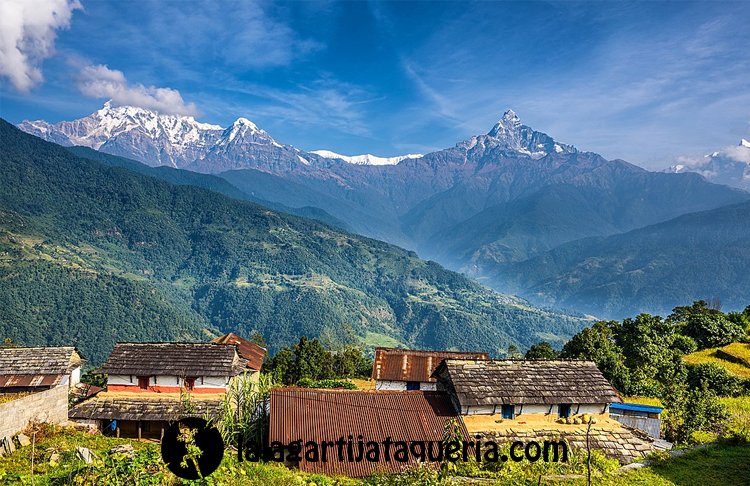
Before embarking on your adventure, it’s essential to be well-prepared with some practical tips for traveling to Nepal. From navigating the local transport system to understanding visa requirements and respecting the cultural norms, having the right knowledge can enhance your experience and help avoid potential challenges. These practical tips will ensure your journey through this fascinating country is smooth and enjoyable, leaving you free to focus on its breathtaking landscapes and vibrant culture.
How to Get Around Nepal
Getting around Nepal can be an adventure in itself, due to the country’s mountainous terrain and developing infrastructure. When traveling to Nepal, the most common ways to move between cities are by bus, car, or plane. Buses are the primary mode of public transport, with both local and tourist options available. While local buses are budget-friendly, they can be crowded and less comfortable. For longer distances, tourist buses offer more comfort but may take a bit longer due to the rough road conditions.
For quicker transport, internal flights between major cities like Kathmandu, Pokhara, and Bharatpur are available, though flight delays are common due to weather conditions. Alternatively, hiring a private car or jeep is a convenient option, especially for those traveling in groups, providing flexibility and comfort. In cities, taxis and rickshaws are affordable ways to get around, but be sure to negotiate fares beforehand.
Visa Requirements for Nepal
When traveling to Nepal, most visitors will need a visa, which is easy to obtain either on arrival at the airport in Kathmandu or in advance from a Nepali embassy. Tourist visas can be issued for 15, 30, or 90 days, depending on the duration of your stay, and can be extended if needed. For those arriving at the Tribhuvan International Airport in Kathmandu, the visa process is straightforward, with kiosks available to fill out your application form. Be sure to carry passport-sized photos and the required visa fee in USD.
Additionally, some nationalities may have visa exemptions or specific requirements, so it’s advisable to check Nepal’s visa regulations based on your home country before you travel. Ensure your passport is valid for at least six months from the date of entry.
Local Etiquette and Cultural Tips
Respect for local customs is crucial while traveling to Nepal, a country with deep-rooted traditions and diverse cultures. One of the most important gestures to understand is the greeting “Namaste,” which is often accompanied by pressing your palms together. It’s widely used as a respectful form of greeting and parting.
When visiting religious sites, dress modestly and remove your shoes before entering temples or monasteries. Avoid pointing your feet at people or religious objects, as feet are considered the lowest part of the body. Similarly, avoid touching someone on the head, as the head is regarded as sacred.
In terms of dining etiquette, remember that the left hand is considered unclean, so always use your right hand to eat or pass items. Being aware of these cultural nuances will not only show respect but also enhance your interactions with locals during your time traveling to Nepal.
Must-Try Foods in Nepal
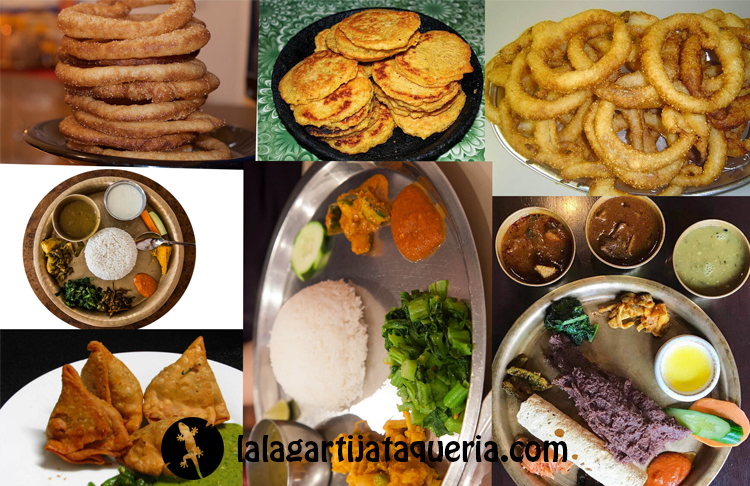
One of the best ways to experience the culture while traveling to Nepal is through its diverse and flavorful cuisine. Nepalese food is a reflection of the country’s rich cultural heritage, blending influences from India, Tibet, and China. Whether you’re trekking in the mountains or exploring city markets, trying the local food is a must. The following are some must-try dishes that will give you a true taste of Nepal.
Dal Bhat
Dal Bhat is the staple dish of Nepal, served daily in most households and restaurants across the country. It consists of steamed rice (bhat) and lentil soup (dal), typically accompanied by a variety of side dishes like vegetable curries, pickles, and sometimes meat. This hearty meal provides the energy needed for long treks and is popular among locals and travelers alike.
While traveling to Nepal, you’ll likely encounter many variations of Dal Bhat, as each region and family adds its own twist. It’s often said that Dal Bhat powers Nepal, as it is a nutritious, filling, and affordable meal that you will see on almost every menu.
Momo Dumplings
Momos are one of Nepal’s most beloved dishes and a must-try for anyone traveling to Nepal. These dumplings are inspired by Tibetan cuisine and are typically filled with minced meat (like chicken or buffalo) or vegetables. Momos can be either steamed or fried and are served with a tangy dipping sauce, often made from tomatoes, sesame seeds, and local spices.
You’ll find momos sold everywhere, from street vendors to high-end restaurants, making them a convenient snack or meal during your travels. The combination of soft dough and flavorful fillings makes momos a popular choice for both locals and visitors.
Sel Roti
Sel Roti is a traditional Nepali sweet treat, often enjoyed during festivals and celebrations. This ring-shaped rice bread is deep-fried and has a slightly sweet, crispy exterior with a soft inside. It’s commonly served with tea or yogurt and makes for a delightful snack or breakfast option while traveling to Nepal.
The preparation of Sel Roti involves a unique technique where the batter is poured in circular shapes into hot oil, resulting in its distinct doughnut-like appearance. This simple yet flavorful food is a reflection of Nepal’s culinary traditions and is particularly popular during the Tihar and Dashain festivals.
Conclusion
Traveling to Nepal offers an unforgettable experience, blending the beauty of nature with rich cultural heritage. From trekking through the world’s most iconic mountains to enjoying traditional Nepalese food, every moment spent in this fascinating country will leave you with lasting memories. Whether you are an adventurer, a spiritual seeker, or a nature lover, traveling to Nepal promises something extraordinary for everyone.
As you plan your journey, remember to respect the local culture, prepare for the varying climate, and make the most of every opportunity to explore. With its stunning landscapes and warm hospitality, traveling to Nepal will undoubtedly be one of the most rewarding experiences of your life.
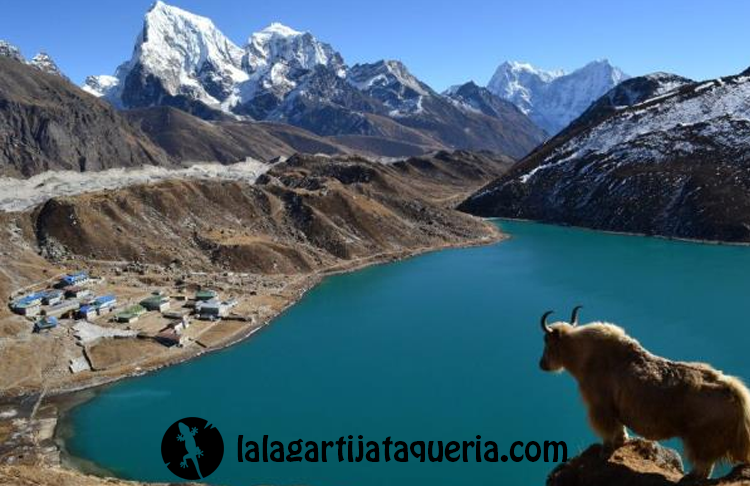
Nepal Vacation Guide for the Best Travel Experience
Nepal is a dream destination for travelers who seek a blend of natural beauty, rich culture, and thrilling adventures. Whether you are planning to trek through the majestic Himalayas, explore ancient temples, or immerse yourself in vibrant festivals, Nepal vacation guide is here to help you plan the perfect getaway. From understanding the best seasons to visit, to identifying key activities for each time of year, this guide will provide you with all the essential information.
Best Time to Visit Nepal
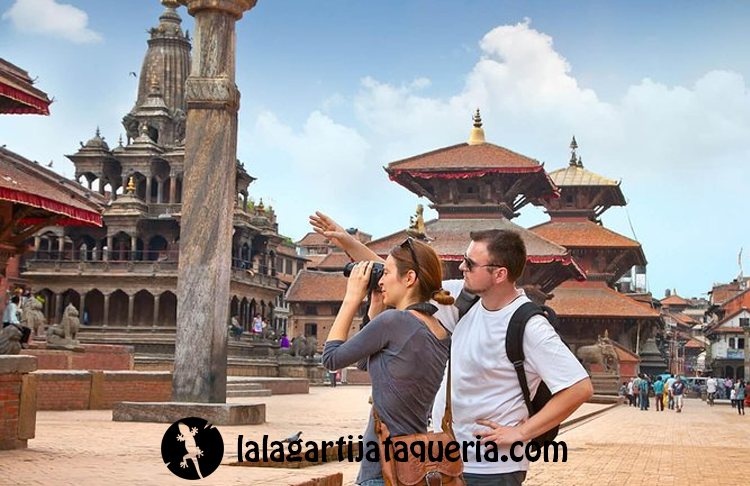
When planning your Nepal vacation guide, timing is key to fully experiencing the country’s diverse offerings. The best time to visit Nepal largely depends on what activities you wish to pursue, as different seasons offer varying climates and conditions. In general, the most popular periods are during the spring (March to May) and autumn (September to November) when the weather is clear and mild, perfect for outdoor adventures and sightseeing.
During these months, you will enjoy excellent visibility of Nepal’s iconic mountain ranges, along with favorable conditions for trekking, cultural tours, and wildlife safaris. However, even the winter and monsoon seasons have their own appeal, offering quieter trails, unique festivals, and lush, rain-soaked landscapes.
Seasons and Weather in Nepal
Nepal experiences four main seasons, each with distinct weather patterns:
- Autumn (September to November): This is the most popular time for tourists, as the monsoon has just ended, leaving behind clear skies and pleasant temperatures ranging from 15°C to 24°C. This is the perfect time for trekking and exploring Nepal’s cultural landmarks.
- Spring (March to May): Known for its blooming rhododendrons and moderate weather, spring is another ideal season for trekking and sightseeing. Temperatures range from 16°C to 23°C, offering warm days and cool nights. It’s also the season for several vibrant festivals like Holi.
- Winter (December to February): While the temperatures can drop significantly, especially in higher altitudes, winter offers stunning, snow-covered landscapes and fewer crowds. Daytime temperatures in Kathmandu range from 9°C to 12°C, making it ideal for cultural visits to cities like Pokhara and Kathmandu.
- Monsoon (June to August): This season brings heavy rainfall, primarily in July and August, making trekking more challenging due to slippery paths. However, it is a great time for those looking to avoid crowds and witness Nepal’s lush greenery and waterfalls.
Trekking Seasons and Outdoor Activities
For those planning a Nepal vacation guide, trekking is often the highlight, and the choice of season will greatly influence your experience.
- Autumn Trekking: This is considered the best time for trekking, as the post-monsoon air is clear, providing breathtaking views of the Himalayas. Popular routes like the Everest Base Camp and Annapurna Circuit are bustling with trekkers during these months.
- Spring Trekking: Another excellent time for trekking, with slightly warmer temperatures and blooming flowers, creating a scenic backdrop for treks. The rhododendron forests along the Annapurna and Langtang regions are particularly beautiful at this time.
- Winter Trekking: While not as popular, winter trekking is possible, especially in lower altitude regions. Trails are quieter, and you can enjoy peaceful landscapes with fewer tourists.
- Monsoon Activities: While trekking may be more challenging during the monsoon, this season is perfect for visiting Nepal’s southern regions like Chitwan, where you can go on a jungle safari and witness wildlife such as Bengal tigers and one-horned rhinos.
Top Destinations in Nepal
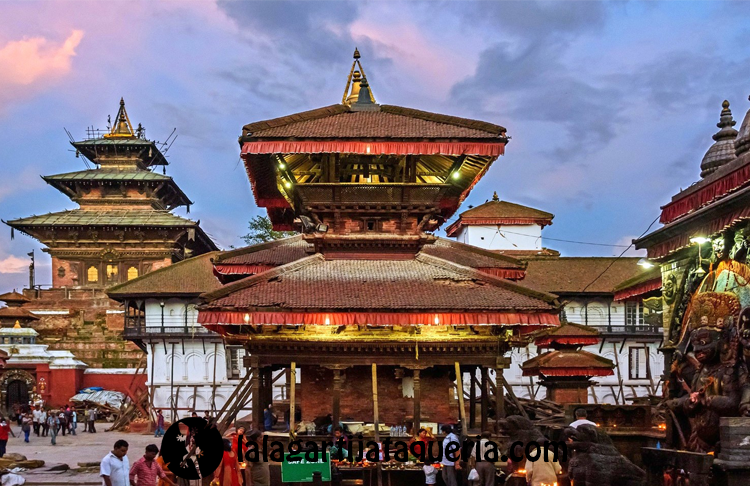
When planning your Nepal vacation guide, it’s essential to know which destinations are must-sees to make the most of your trip. Nepal is rich with breathtaking landscapes, historical sites, and vibrant wildlife, offering something for every kind of traveler. From the bustling streets of Kathmandu to the serene lakes of Pokhara and the sacred birthplace of Buddha in Lumbini, each destination brings its own unique charm. Below, we explore some of the top destinations you should include in your itinerary, each offering unforgettable experiences.
Exploring Kathmandu Valley’s Cultural Treasures
The Kathmandu Valley is the cultural heart of Nepal, brimming with ancient temples, palaces, and UNESCO World Heritage Sites. A key highlight of your Nepal vacation guide, this area includes the three historic cities of Kathmandu, Bhaktapur, and Patan, each offering a wealth of artistic and architectural wonders.
- Kathmandu Durbar Square: This historical square is a must-visit, featuring the royal palace and intricately carved wooden temples. It’s the perfect place to immerse yourself in Nepal’s ancient history and vibrant traditions.
- Swayambhunath (Monkey Temple): Perched atop a hill, this Buddhist stupa offers panoramic views of the city and is an important pilgrimage site for both Buddhists and Hindus.
- Patan Durbar Square: Known for its remarkable Newari architecture and museums, Patan is a hub for artisans and craftspeople. Don’t miss the Krishna Mandir temple, carved entirely from stone.
Pokhara: Nepal’s Scenic Lakeside City
Nestled beside the tranquil Phewa Lake and surrounded by the Annapurna mountain range, Pokhara is a highlight in any Nepal vacation guide. This city is renowned for its natural beauty and as the starting point for many of Nepal’s iconic trekking routes.
- Phewa Lake: Take a boat ride on this peaceful lake, with the stunning reflection of the snow-capped mountains on the water’s surface.
- Sarangkot: A popular viewpoint for witnessing breathtaking sunrise and sunset views over the Annapurna and Dhaulagiri ranges.
- Adventure Activities: Pokhara is also a hotspot for adventure sports like paragliding, bungee jumping, and zip-lining, making it a favorite for thrill-seekers.
Chitwan National Park: Wildlife and Jungle Safaris
For wildlife enthusiasts, Chitwan National Park is an unmissable stop on your Nepal vacation guide. This UNESCO World Heritage Site is home to diverse ecosystems and rare species, offering an exciting jungle experience.
- Jungle Safaris: Embark on a jeep or elephant safari through the dense jungles to spot one-horned rhinos, Bengal tigers, and wild elephants. You can also opt for a canoe ride along the Rapti River to observe crocodiles and bird species.
- Cultural Experience: Visit the nearby Tharu villages to learn about the local indigenous culture, attend traditional dances, and explore the lifestyle of the people who have lived in harmony with nature for generations.
Lumbini: The Birthplace of Buddha
Lumbini is one of the most spiritually significant destinations in Nepal, as it is the birthplace of Siddhartha Gautama, who later became the Buddha. For those interested in history, spirituality, and peace, Lumbini is a must-visit on your Nepal vacation guide.
- Maya Devi Temple: The main attraction in Lumbini, this temple marks the exact spot where Queen Maya Devi gave birth to Buddha. It is surrounded by peaceful gardens and ancient monastic ruins.
- Lumbini Monastic Zone: This area is home to monasteries built by Buddhist communities from around the world, offering a serene and contemplative environment for visitors.
Each of these destinations adds a unique layer to the richness of Nepal’s offerings, making your vacation a journey through history, nature, and spirituality.
Trekking in Nepal
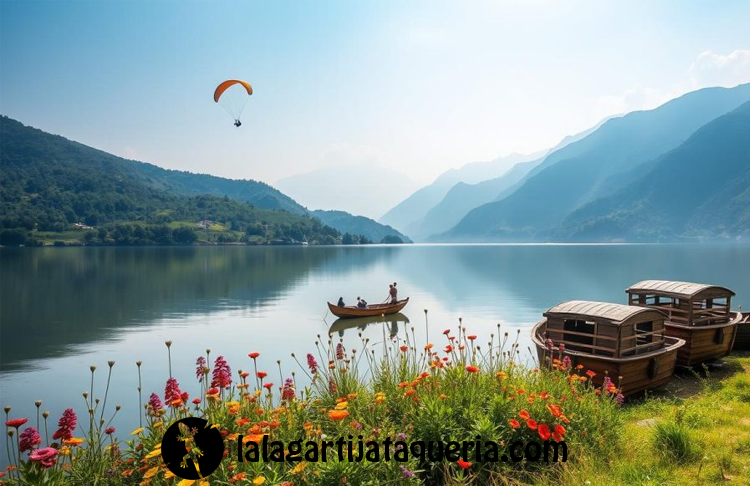
Trekking in Nepal is an adventure of a lifetime, attracting outdoor enthusiasts from around the globe. Known for its stunning landscapes and diverse terrains, Nepal offers treks suitable for all skill levels, from challenging high-altitude journeys to gentle walks through picturesque valleys. In this section of your Nepal vacation guide, we will explore some of the most iconic treks that highlight the country’s natural beauty and cultural richness. Whether you’re aiming for the heights of the Himalayas or seeking beginner-friendly trails, Nepal has something for everyone.
Everest Base Camp Trek: A Journey to the World’s Roof
The Everest Base Camp Trek is perhaps the most famous trekking route in the world, drawing adventurers eager to experience the majesty of Mount Everest firsthand. This trek is a highlight of your Nepal vacation guide, offering breathtaking views, rich Sherpa culture, and unforgettable challenges.
- Trail Overview: The trek typically takes about 12 to 14 days, beginning in the bustling town of Lukla. Along the way, trekkers will pass through charming Sherpa villages, ancient monasteries, and lush forests, culminating in the breathtaking sight of Everest at Base Camp.
- Cultural Experience: As you trek, you’ll have the opportunity to experience the vibrant Sherpa culture, visiting local markets, monasteries, and interacting with the warm-hearted locals who call this region home.
Annapurna Circuit: One of the World’s Best Treks
Renowned as one of the best treks globally, the Annapurna Circuit offers a diverse landscape, from lush subtropical forests to arid high-altitude deserts. This trek is a must-do in your Nepal vacation guide, providing an immersive experience in nature and culture.
- Diverse Terrain: Spanning approximately 160-230 km (depending on the route), this trek takes you through various climatic zones, showcasing the region’s stunning biodiversity and breathtaking views of the Annapurna range.
- Throng La Pass: The trek culminates at Throng La Pass, one of the highest trekking passes in the world, where trekkers can marvel at panoramic views of some of the highest peaks on the planet.
Beginner-Friendly Treks in Nepal
For those new to trekking or seeking a more relaxed experience, Nepal offers several beginner-friendly treks that allow you to enjoy the beauty of the Himalayas without the extreme challenges of high-altitude trekking. These trails are perfect inclusions in your Nepal vacation guide.
- Ghorepani Poon Hill Trek: This relatively short trek is ideal for beginners, taking about 4-5 days. It offers stunning sunrise views over the Annapurna and Dhaulagiri ranges from Poon Hill, combined with beautiful rhododendron forests.
- Langtang Valley Trek: Accessible and picturesque, the Langtang Valley trek can be completed in about 7-10 days. It offers diverse landscapes and the chance to experience the local Tamang culture, all while being less crowded than other routes.
Each of these trekking experiences showcases the stunning beauty and cultural depth of Nepal, ensuring that your journey through this incredible country is unforgettable.
Nepalese Cuisine and Dining Tips

Exploring Nepalese cuisine is a delightful part of any Nepal vacation guide. The country’s culinary scene is a reflection of its diverse cultures and traditions, offering a rich tapestry of flavors, textures, and aromas. From hearty meals to street snacks, Nepalese food is not only delicious but also an integral part of the local lifestyle. In this section, we will delve into must-try dishes and essential dining tips to ensure you have a safe and enjoyable culinary experience during your visit.
Must-Try Dishes: Dal Bhat, Momos, and More
When it comes to Nepalese cuisine, several iconic dishes are a must-try, each representing the heart of Nepalese culture:
- Dal Bhat: This traditional meal consists of lentil soup (dal) served with rice (bhat), accompanied by vegetables and sometimes meat. It’s a staple in Nepal and offers a balanced, nutritious meal that can be found in homes and restaurants alike.
- Momos: These delicious dumplings can be filled with vegetables, chicken, or buffalo meat. Steamed or fried, momos are a popular street food and a great snack option while exploring cities like Kathmandu and Pokhara.
- Sel Roti: A traditional rice-based doughnut, sel roti is crispy on the outside and soft on the inside. It’s often enjoyed during festivals but can be found year-round in local markets.
Staying Safe While Eating: Food Hygiene and Gastro Issues
While indulging in the delicious flavors of Nepal, it’s important to prioritize food safety to avoid gastrointestinal issues that can affect your trip. Here are some essential tips for enjoying Nepalese cuisine safely:
- Choose Clean Eateries: Opt for restaurants and street vendors that appear clean and are busy with locals. High turnover often indicates fresh food and better hygiene standards.
- Drink Bottled Water: Always choose bottled or purified water, as tap water may not be safe to drink. Additionally, avoid ice in drinks unless you’re certain it’s made from purified water.
- Be Cautious with Raw Foods: Raw fruits and vegetables can be a source of contamination. Opt for cooked foods when possible and ensure fruits are peeled before consuming.
Accommodation Options in Nepal

Finding the right place to stay is an essential part of your Nepal vacation guide, as it can greatly enhance your travel experience. Nepal offers a wide range of accommodation options to suit various budgets and preferences, from basic hostels to luxurious eco-lodges nestled in nature. Understanding your options will help you choose accommodations that provide comfort, convenience, and a taste of local culture. In this section, we’ll explore the diverse types of accommodation available across the country, whether you’re in the heart of Kathmandu or trekking in the Himalayas.
From Budget Hostels to Luxury Eco-Lodges
Nepal caters to all types of travelers, and its accommodation scene reflects this diversity:
- Budget Hostels: Ideal for backpackers and budget-conscious travelers, hostels in cities like Kathmandu and Pokhara offer affordable rates and a chance to meet fellow travelers. Many hostels provide dormitory-style rooms and communal spaces for socializing, along with basic amenities.
- Mid-Range Hotels: For those seeking a bit more comfort without breaking the bank, mid-range hotels offer private rooms with en-suite facilities, Wi-Fi, and often include breakfast. Many of these hotels are conveniently located near popular attractions.
- Luxury Eco-Lodges: For a unique experience, consider staying in one of Nepal’s eco-lodges or boutique hotels. These accommodations are designed to minimize environmental impact while providing luxurious amenities, stunning views, and often include organic meals made from local produce.
Staying in Teahouses While Trekking
When trekking in the Himalayas, staying in teahouses is a quintessential part of the experience. These small, family-run lodges offer basic accommodations and meals, providing a warm and welcoming atmosphere:
- Comfort and Hospitality: Teahouses typically feature simple rooms with twin beds and shared bathrooms. The hospitality of the local owners adds a personal touch to your stay, and you’ll often enjoy delicious home-cooked meals made from local ingredients.
- Cultural Exchange: Staying in teahouses gives you a chance to interact with locals, learn about their way of life, and experience the stunning natural beauty of the surrounding landscapes.
- Convenience: Teahouses are strategically located along popular trekking routes, making them a convenient option for trekkers. You’ll find them equipped with essential services, such as charging stations and hot showers, making your trek more comfortable.
Practical Travel Tips for Nepal

Traveling to Nepal can be an enriching experience, but being well-prepared is essential for navigating its unique landscapes and cultural nuances. This section of your Nepal vacation guide focuses on practical travel tips that will help you make the most of your adventure. From transportation options to understanding visa requirements and managing your finances, these insights will ensure a smooth and enjoyable trip.
Transportation: Navigating Nepal’s Rough Roads
Getting around Nepal can be challenging due to its mountainous terrain and often rough road conditions. Here are some key transportation options to consider:
- Domestic Flights: For quicker travel between major cities and trekking regions, domestic flights are a convenient option. Airlines like Yeti Airlines and Buddha Air operate flights connecting Kathmandu to Pokhara, Lukla, and other popular destinations.
- Buses and Microbuses: Long-distance buses are a common way to travel between cities. While they are budget-friendly, be prepared for long travel times and bumpy roads. Tourist buses often provide a more comfortable experience, with better amenities.
- Taxis and Ride-Sharing: In cities like Kathmandu and Pokhara, taxis are readily available. It’s advisable to agree on a fare before your ride. Ride-sharing apps like Pathao are also gaining popularity for local travel.
Visa and Entry Requirements
Before traveling to Nepal, it’s crucial to understand the visa requirements:
- Visa on Arrival: Most tourists can obtain a visa on arrival at Tribhuvan International Airport in Kathmandu. Ensure you have a valid passport, a passport-sized photo, and sufficient cash (USD or Euro) to pay for the visa fee.
- Visa Types: Tourist visas are generally issued for 15, 30, or 90 days. Make sure to check the latest regulations and apply in advance if necessary, especially for extended stays.
- Customs Regulations: Familiarize yourself with customs regulations to avoid issues upon entry. There are restrictions on certain items, so it’s best to check the official guidelines before your trip.
Currency, ATMs, and Money-Saving Tips
Understanding the financial landscape is essential for managing your expenses in Nepal:
- Currency: The official currency is the Nepalese Rupee (NPR). It’s advisable to carry some cash, especially in rural areas where card payments may not be accepted.
- ATMs: ATMs are available in major cities, but they may not always accept foreign cards. It’s a good idea to withdraw cash in larger cities before heading to remote areas.
- Money-Saving Tips: Consider using public transportation, eating at local eateries, and staying in guesthouses or teahouses to save money. Bargaining is common in markets, so don’t hesitate to negotiate prices for goods and services.
Safety and Health Considerations
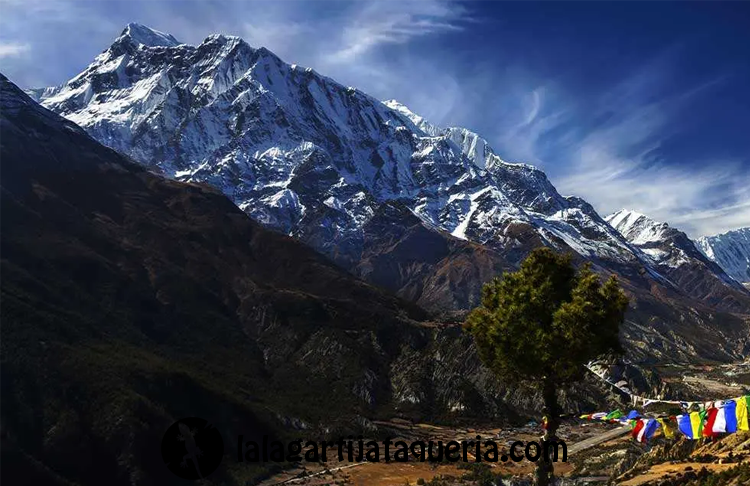
When traveling to Nepal, especially for trekking and high-altitude activities, safety and health should be a top priority. The country’s diverse geography, from bustling cities to remote mountain areas, can pose various risks if you’re unprepared. In this section of your Nepal vacation guide, we will explore essential safety and health considerations to help you stay safe during your adventure, from dealing with altitude sickness to ensuring you have adequate travel insurance.
Altitude Sickness: How to Prevent and Handle It
Altitude sickness, or Acute Mountain Sickness (AMS), is a common concern for trekkers in Nepal, particularly in regions like Everest Base Camp or Annapurna. As you ascend to higher altitudes, the decrease in oxygen levels can cause symptoms such as headaches, dizziness, nausea, and fatigue. Here’s how to manage and prevent altitude sickness:
- Gradual Ascent: The best way to prevent altitude sickness is by acclimatizing slowly. Avoid ascending more than 300-500 meters per day once you’re above 3,000 meters.
- Hydration: Drink plenty of water to stay hydrated, but avoid alcohol and caffeine, which can dehydrate your body and worsen symptoms.
- Medication: Consider carrying Diamox (acetazolamide), a medication that helps prevent and reduce the symptoms of altitude sickness. Always consult your doctor before starting any medication.
- Know the Signs: Early detection of symptoms is crucial. If you start feeling unwell, descend immediately and rest. In severe cases, seek medical attention or use oxygen if available.
Travel Insurance: What You Need for Trekking
Having proper travel insurance is essential when trekking in Nepal, as accidents and emergencies can happen, especially in remote areas. Here’s what to look for when choosing the right travel insurance for your trek:
- Trekking Coverage: Ensure your policy specifically covers trekking at high altitudes. Most standard travel insurance plans do not cover treks above 3,000 meters, so look for a policy that includes coverage for altitudes up to 5,000 meters or higher if you plan to trek routes like Everest Base Camp.
- Helicopter Evacuation: In case of severe illness or injury, helicopter evacuation may be necessary, especially from remote trekking regions. Make sure your insurance covers emergency evacuation costs.
- Medical Coverage: Your policy should include comprehensive medical coverage for accidents, altitude sickness, and any other illnesses that may occur during your trip.
Conclusion
As you plan your Nepal adventure, this Nepal vacation guide offers you the essential insights to make your trip unforgettable. Whether you’re trekking through the breathtaking Himalayas, exploring ancient temples, or savoring the flavors of Nepalese cuisine, each experience will leave you with lasting memories. By considering practical travel tips, safety measures, and choosing the right time to visit, you can ensure a seamless journey filled with discovery and wonder.
With its rich culture, natural beauty, and welcoming locals, Nepal promises an experience unlike any other. Let this Nepal vacation guide be your go-to resource as you embark on a once-in-a-lifetime journey through this stunning Himalayan paradise. Safe travels and happy exploring!

Guide Voyage Nepal for Adventurers and Culture Lovers
Nestled between the majestic Himalayas, Nepal is a land of stunning landscapes, rich cultural heritage, and spiritual sanctuaries. This guide will help you navigate through the essentials for your guide voyage Nepal, from its breathtaking trekking routes to its vibrant cities. Whether you’re an adventurer seeking the thrill of Everest Base Camp or a cultural explorer looking to immerse yourself in ancient traditions, Nepal offers an unforgettable journey. Let’s dive into the reasons to visit this extraordinary country, when to plan your trip, and the best experiences waiting for every traveler.
Why Visit Nepal?
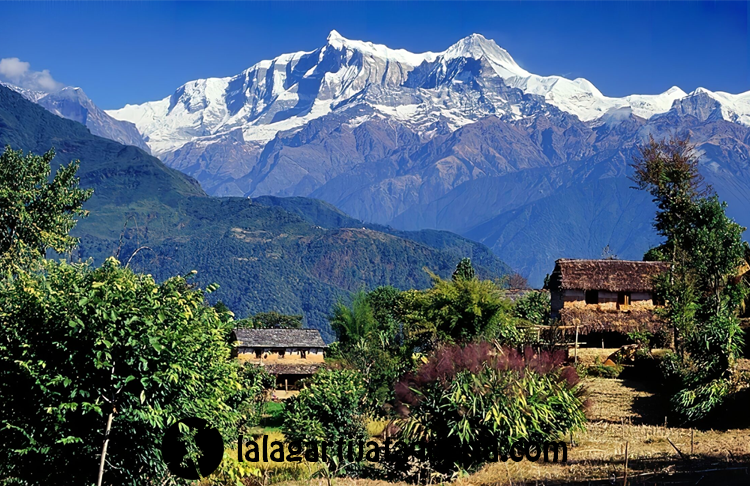
Nepal’s allure is multifaceted, drawing in nature lovers, spiritual seekers, and adventurers alike. The country’s most famous landmark is undoubtedly Mount Everest, the world’s tallest mountain, making Nepal a dream destination for trekkers. However, guide voyage Nepal goes far beyond trekking. From the serene beauty of Pokhara’s lakeside to the bustling life in Kathmandu’s Durbar Square, the country’s landscape is as diverse as its culture.
Nepal is also home to several UNESCO World Heritage Sites, including Lumbini, the birthplace of Buddha, and the Kathmandu Valley, renowned for its temples and ancient architecture. Spirituality is woven into everyday life, with Buddhist and Hindu influences apparent in every corner of the country. Moreover, festivals like Dashain and Tihar bring an explosion of color and tradition, making it an exciting destination year-round.
Top Experiences for Every Traveler
- Trekking in the Himalayas: For those craving adventure, no guide voyage Nepal is complete without experiencing the famous trekking routes. The Annapurna Circuit and Everest Base Camp treks offer some of the world’s most stunning landscapes. The autumn months (September to November) are ideal for clear skies and optimal trekking conditions.
- Cultural Exploration in Kathmandu Valley: Kathmandu is a historical and cultural hub. Durbar Square, Swayambhunath (Monkey Temple), and Pashupatinath Temple are must-see sites for understanding Nepal’s rich spiritual and architectural heritage.
- Wildlife Safaris in Chitwan National Park: Nature lovers will find Chitwan National Park a perfect retreat. The park offers opportunities to spot Bengal tigers, rhinos, and elephants while enjoying the subtropical forests of Nepal’s southern plains.
- Relaxing by Phewa Lake in Pokhara: If you’re looking for a peaceful escape, Pokhara’s serene beauty offers relaxation against a backdrop of the Annapurna mountain range. This city is also a gateway for many trekking routes but remains quieter and more laid-back than Kathmandu.
Best Time to Visit Nepal
The best time to embark on your guide voyage Nepal largely depends on your interests. For trekking, autumn (September to November) is widely regarded as the best season due to the stable weather, clear skies, and stunning views of the Himalayas. During this time, the temperatures are mild, making it ideal for outdoor activities like trekking and wildlife safaris.
Spring (March to May) is another great time, especially if you want to see Nepal’s trails lined with blooming rhododendrons. However, be prepared for warmer temperatures, particularly in the lowland areas like Chitwan and Lumbini. Summer (June to August) coincides with the monsoon season, making trekking more difficult due to muddy trails and landslides, although the Mustang region, which lies in the rain shadow, remains accessible. Winter (December to February) brings cooler temperatures and snow at higher altitudes but is still suitable for lower-elevation hikes and cultural exploration in Kathmandu and Pokhara.
Must-See Destinations in Nepal
When planning your guide voyage Nepal, there are several destinations that should be at the top of your list. Whether you’re seeking natural beauty, cultural experiences, or thrilling adventures, these must-see spots will leave you captivated:
- Kathmandu Valley: This cultural treasure trove offers a rich history through its ancient temples and palaces. Key spots to visit include Durbar Square, Swayambhunath (Monkey Temple), and Pashupatinath Temple. As a UNESCO World Heritage Site, the valley is a must-visit for anyone wanting to explore Nepal’s spiritual and architectural heritage.
- Pokhara: Known as the gateway to the Himalayas, Pokhara is famous for Phewa Lake, where you can enjoy a peaceful boat ride with the majestic Annapurna mountain range in the background. It’s also a popular starting point for treks like the Annapurna Circuit and Poon Hill.
- Chitwan National Park: For wildlife enthusiasts, Chitwan National Park offers the opportunity to spot Bengal tigers, one-horned rhinos, and elephants. Jungle safaris, canoeing, and bird watching are among the top activities here.
- Lumbini: This is the birthplace of Lord Buddha and a pilgrimage site for Buddhists from around the world. The Maya Devi Temple and the Peace Pagoda are essential stops on any visit to this spiritual landmark.
- Everest Base Camp: No guide voyage Nepal is complete without mentioning the world’s tallest peak. For trekkers, reaching Everest Base Camp is a monumental achievement, providing breathtaking views of the Himalayan range and a glimpse into the Sherpa culture.
Off the Beaten Path: Hidden Gems
For travelers seeking experiences beyond the usual tourist trail, Nepal offers several hidden gems that add a unique touch to your guide voyage Nepal:
- Rara Lake: Located in the remote northwest, Rara Lake is Nepal’s largest lake. Surrounded by lush forests and alpine meadows, this pristine area offers solitude, stunning scenery, and opportunities for trekking. It’s an ideal destination for those who want to escape the crowds and immerse themselves in nature.
- Tsum Valley: A hidden gem in the Gorkha region, Tsum Valley is a sacred Buddhist area that has remained relatively untouched by modernization. The valley is home to ancient monasteries, traditional villages, and breathtaking mountain views. A trek here provides a cultural experience that feels like stepping back in time.
- Bandipur: This charming hilltop town offers panoramic views of the Himalayas without the crowds of more popular destinations. Bandipur is known for its well-preserved architecture and traditional Newari culture. It’s an excellent spot to relax, hike, or simply enjoy the stunning landscapes.
- Upper Mustang: For those venturing beyond the usual paths, Upper Mustang is a restricted area that requires a special permit to visit. This region is known for its unique desert-like landscapes, ancient caves, and Tibetan Buddhist culture. Its isolation and mystery make it a hidden treasure in your guide voyage Nepal.
Practical Travel Tips for Nepal
To ensure a smooth and enjoyable journey, here are some practical travel tips for your guide voyage Nepal:
- Visa Requirements: Most travelers can obtain a visa on arrival at Tribhuvan International Airport in Kathmandu. Make sure to check the specific visa regulations for your nationality before departure.
- Altitude Sickness: If you plan on trekking in the Himalayas, it’s essential to acclimate properly to avoid altitude sickness. Take it slow, stay hydrated, and plan for rest days during your trek.
- Best Time to Visit: As mentioned earlier, the best time to visit Nepal is in the autumn (September to November) for clear skies and comfortable trekking conditions. Spring (March to May) is also a great time, particularly for viewing rhododendron blooms. Avoid the monsoon season (June to August) as heavy rains can disrupt travel plans.
- Packing Essentials: Depending on your itinerary, pack light but be sure to include layers for varying temperatures, sturdy hiking boots, a water purification system, and essential medicines (especially for altitude). Trekking poles and a down jacket are recommended for high-altitude treks.
- Currency: The local currency is the Nepalese rupee (NPR), and while credit cards are accepted in major cities, it’s advisable to carry cash when traveling to remote areas. ATMs are available in Kathmandu and Pokhara but may not be reliable in rural regions.
- Cultural Etiquette: Respect the local customs, especially in religious sites. Always remove your shoes before entering temples and dress modestly. It’s also considered polite to greet people with “Namaste,” the traditional Nepali greeting.
Incorporating these travel tips into your guide voyage Nepal will help you make the most of your visit while respecting the local culture and environment.
Trekking in Nepal: What You Need to Know
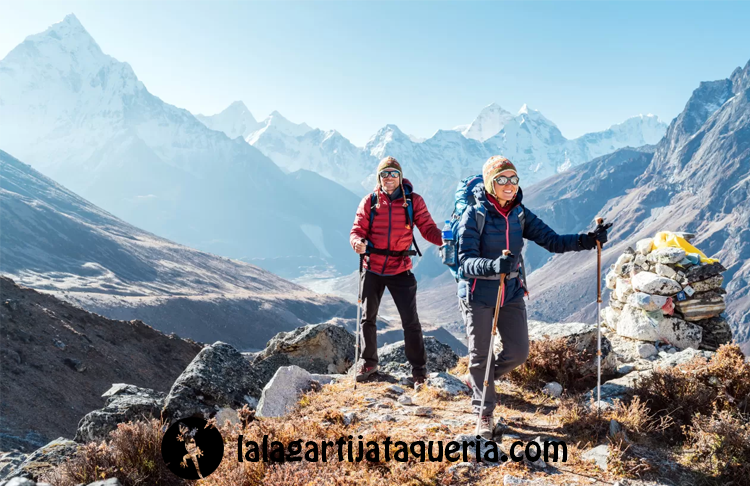
Trekking in Nepal is not just an adventure; it’s a journey through breathtaking landscapes, rich cultures, and ancient traditions. Known as one of the top trekking destinations in the world, Nepal offers trails ranging from leisurely walks to challenging climbs that cater to all levels of adventurers. Whether you’re aiming for the iconic Everest Base Camp or the stunning Annapurna Circuit, preparation is key to ensure a safe and rewarding experience. Understanding the essential aspects of trekking in Nepal will help you make the most of your guide voyage Nepal and truly appreciate the majestic beauty surrounding you.
Cultural Insights for Visitors
When trekking through Nepal, cultural sensitivity is crucial. Understanding local customs and traditions will enhance your experience and foster positive interactions with the local communities. Here are some cultural insights to keep in mind:
- Respect for Religion: Nepal is a diverse country with a mix of Hindu and Buddhist cultures. Temples and monasteries are sacred spaces; be sure to dress modestly and ask permission before taking photographs. When visiting these sites, remove your shoes and maintain a respectful demeanor.
- Greetings and Etiquette: The traditional greeting in Nepal is “Namaste,” accompanied by a slight bow with palms together. This gesture shows respect and is commonly used in both formal and informal interactions. Avoid using your left hand for greeting or handing items, as the left hand is considered unclean in many cultures.
- Local Customs: It’s customary to offer a small gift when invited into someone’s home. Food is often shared, and it’s polite to accept at least a small portion. Additionally, when trekking, follow local trails and respect private property to ensure the preservation of the landscape.
- Language and Communication: While Nepali is the official language, English is widely spoken in tourist areas. Learning a few basic Nepali phrases can go a long way in showing respect and enhancing your interactions with locals.
- Environmental Awareness: Many trekking routes pass through pristine natural areas. It’s essential to practice responsible trekking by not littering and following guidelines for waste disposal. Supporting local eco-friendly initiatives can also contribute positively to the environment.
Understanding these cultural nuances will not only enrich your guide voyage Nepal but also create a deeper connection with the people and places you encounter along the way. In the next section, we’ll delve into the practicalities of preparing for your trekking adventure.
As you plan your guide voyage Nepal, remember that this country offers a unique blend of natural beauty and cultural richness. Whether you’re trekking through the Himalayas or exploring ancient temples, Nepal promises an unforgettable experience. Its diverse landscapes, welcoming communities, and spiritual atmosphere make it a destination worth visiting, no matter your interests or level of adventure.
With proper preparation and an open heart, your journey to Nepal will be a rewarding one. From the towering peaks of the Everest region to the tranquil lakes of Pokhara, your guide voyage Nepal will leave you with memories that last a lifetime, and a deeper appreciation for the beauty and traditions of this remarkable country.
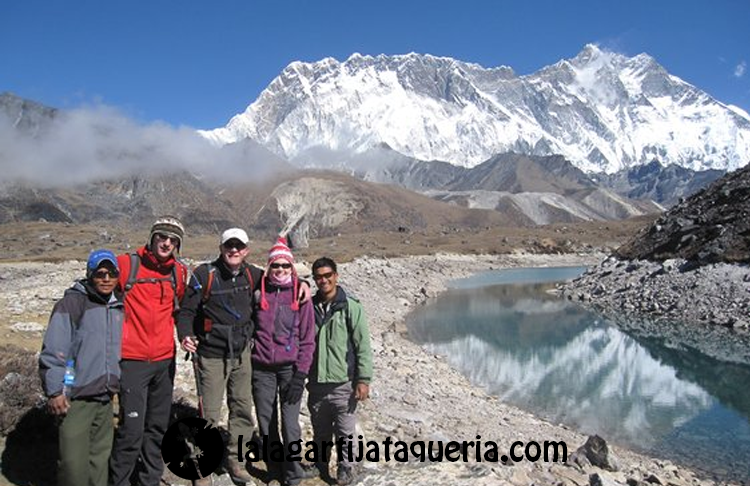
Crafting the Perfect Tour Plan for Nepal Journey
Planning a tour to Nepal is like opening a gateway to breathtaking landscapes, rich cultures, and thrilling adventures. Known for its towering Himalayan peaks, ancient temples, and vibrant festivals, Nepal offers something for every type of traveler. Whether you are an avid trekker, a cultural enthusiast, or someone seeking a spiritual escape, Nepal has all the ingredients for an unforgettable journey.
In this comprehensive guide, we’ll explore essential details to help you create the perfect tour plan for Nepal. From the best times to visit to the must-see festivals, this article aims to prepare you for an extraordinary experience in the heart of the Himalayas.
Introduction to Nepal: A Land of Diversity and Adventure

Nepal is a country that blends the serenity of its majestic mountains with the rich history of ancient cities and diverse cultures. When you craft your tour plan for Nepal, you are opening yourself to a range of activities such as trekking to the Everest Base Camp, exploring the UNESCO World Heritage sites in Kathmandu, and enjoying the tranquility of the lush Chitwan jungles.
Visitors to Nepal can find beauty in both its natural wonders and cultural experiences. Nepal’s landscapes stretch from the towering heights of the Himalayas to the fertile plains of the Terai, while its history and spirituality are woven into the fabric of life through festivals, art, and architecture. Such diversity makes it essential to thoughtfully plan your tour plan for Nepal to make the most of your visit.
Best Time to Visit Nepal
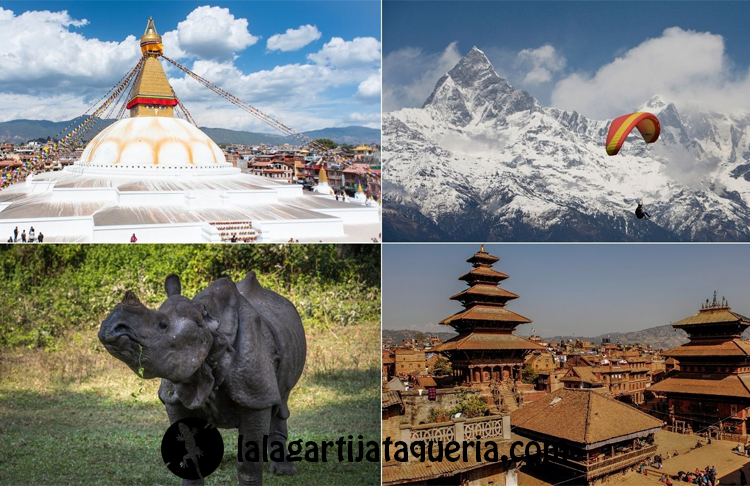
Choosing the best time for your tour plan for Nepal depends on what you aim to experience. The country offers different wonders throughout the year, each season bringing its own unique charm.
Climate and Seasonal Recommendations
Nepal’s climate can be categorized into two primary seasons: the dry season (October to May) and the monsoon season (June to September). If your tour plan for Nepal revolves around trekking or exploring the outdoors, the dry season, particularly autumn (September to November) and spring (March to May), is ideal. During these months, the weather remains clear, offering spectacular views of the mountains and perfect conditions for outdoor activities like trekking and wildlife safaris.
However, if you wish to avoid crowds and explore cities like Kathmandu or Pokhara at a leisurely pace, the winter season (December to February) is also an excellent choice. Although it’s colder, especially in the higher altitudes, you can enjoy quieter trekking trails and picturesque snowy peaks during this time.
Festive Events and Cultural Celebrations
Nepal’s festivals are a vibrant display of its rich cultural heritage. If your tour plan for Nepal aligns with the festival season, you’ll have the opportunity to immerse yourself in the local traditions and celebrations. One of the most significant festivals is Dashain, which takes place between September and October. It’s a 15-day celebration that symbolizes the victory of good over evil, involving various rituals, family gatherings, and feasts.
Another essential festival is Tihar, celebrated in October or November, which is known as the festival of lights. Homes are decorated with oil lamps, and each day is dedicated to different animals like crows, dogs, and cows, highlighting Nepal’s deep spiritual connection with nature.
For travelers interested in traditional processions, Indra Jatra in Kathmandu and Teej for Hindu women in August are other notable events that bring the streets alive with dancing, singing, and rituals.
These highlights are just a glimpse into crafting an extraordinary tour plan for Nepal. Planning around the weather and festivals can enhance your experience, offering the chance to see Nepal at its cultural and scenic best.
Planning Your Itinerary
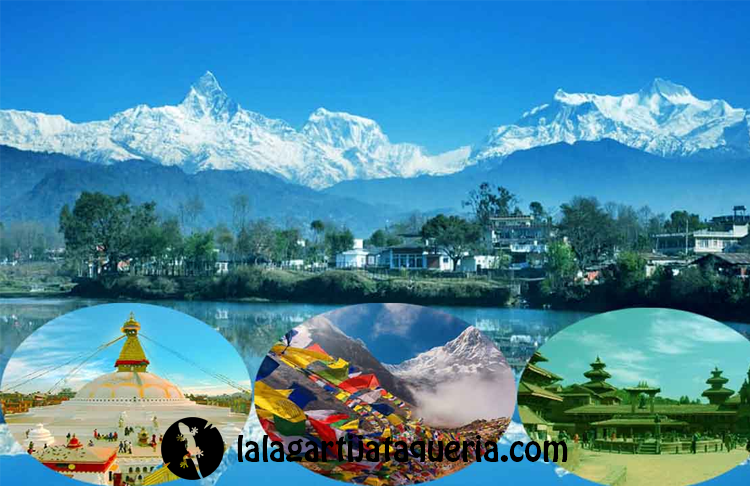
Creating the ideal tour plan for Nepal requires balancing the country’s incredible natural beauty with its rich cultural heritage. A well-rounded itinerary should include visits to iconic historical sites, engaging in thrilling outdoor activities, and exploring Nepal’s unique ecosystems. In this section, we will lay out a 7-day classic Nepal itinerary that gives you a taste of everything: from the bustling streets of Kathmandu, the tranquil beauty of Pokhara, the wildlife of Chitwan, to the spiritual ambiance of Lumbini.
This tour plan for Nepal is perfect for those who want to experience the diverse offerings of the country within a limited time frame, ensuring that you see Nepal’s highlights while maximizing your adventure.
7-Day Classic Nepal Itinerary
For those embarking on a 7-day tour plan for Nepal, we recommend a mix of cultural exploration, adventure activities, and nature tours. Here’s a breakdown of the itinerary to help you get started:
Day 1-2: Kathmandu Valley Exploration
Begin your journey in the vibrant capital, Kathmandu. Explore the UNESCO World Heritage sites in the Kathmandu Valley, including Swayambhunath (Monkey Temple), Pashupatinath Temple, and the Boudhanath Stupa. These ancient sites offer insights into Nepal’s deep spiritual roots in both Hinduism and Buddhism.
- Day 1: Visit Durbar Square, the heart of Kathmandu’s cultural heritage, and marvel at the intricate Newari architecture. End the day with an evening Aarati ceremony at Pashupatinath.
- Day 2: Discover the ancient cities of Patan and Bhaktapur. Patan’s Durbar Square is famous for its historic palaces and art, while Bhaktapur offers a glimpse into medieval Nepal with its well-preserved temples and squares.
Day 3-4: Pokhara and Adventure Activities
On the third day, head to Pokhara, known for its serene lakes and majestic mountain views.
- Day 3: Take an early morning drive to Sarangkot to witness the sunrise over the Himalayas. Spend the rest of the day exploring Phewa Lake, Devi’s Falls, and the Gupteshwor Cave. For adventure lovers, consider paragliding or boating on Phewa Lake.
- Day 4: Engage in more adventurous activities such as zip-lining or ultra-light flights for a closer view of the Annapurna range. Enjoy the calm atmosphere of World Peace Pagoda to wrap up the day.
Day 5-6: Chitwan National Park Safari
After Pokhara, drive to Chitwan National Park, where the lush jungle provides a completely different experience compared to the mountains.
- Day 5: Embark on a jungle safari to spot one-horned rhinoceros, Bengal tigers, and a variety of bird species. You can also enjoy canoeing along the Rapti River to observe crocodiles and birdlife.
- Day 6: Explore more of Chitwan with activities like elephant bathing or visiting local Tharu villages to learn about their indigenous culture.
Day 7: Lumbini – The Birthplace of Buddha
End your tour plan for Nepal with a visit to Lumbini, the birthplace of Buddha.
- Day 7: Explore the Maya Devi Temple, the Ashoka Pillar, and several monasteries built by Buddhist countries around the world. Reflect on the spiritual significance of Lumbini before heading back to Kathmandu for your departure.
This itinerary is designed to give you a taste of Nepal’s cultural diversity, natural beauty, and thrilling adventures, ensuring your tour plan for Nepal is nothing short of unforgettable.
Top Destinations to Visit in Nepal
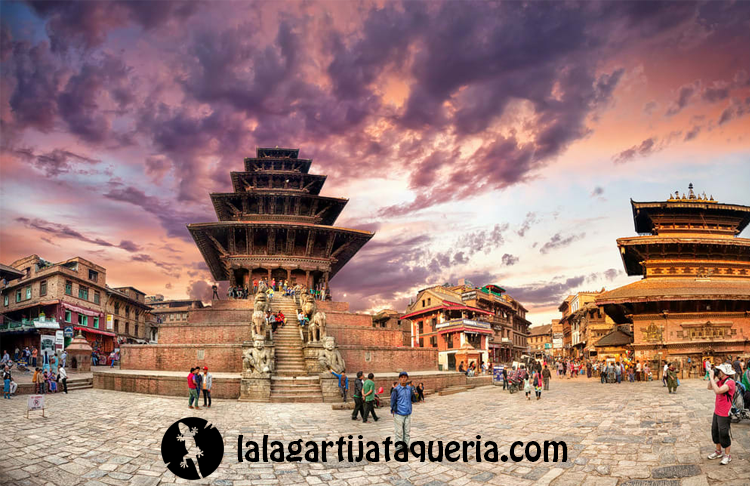
When crafting a tour plan for Nepal, you’ll want to ensure that you experience the unique blend of natural beauty, adventure, and spirituality that this country offers. Nepal is home to four prominent destinations: the historic and cultural city of Kathmandu, the serene landscapes of Pokhara, the diverse wildlife of Chitwan, and the spiritual tranquility of Lumbini. Each of these places provides a different flavor of Nepal, making them essential stops on any itinerary.
Kathmandu: Culture and Heritage
Kathmandu, the vibrant capital of Nepal, is a treasure trove of historical and cultural landmarks. It is home to numerous UNESCO World Heritage Sites, including Durbar Square, Pashupatinath Temple, Swayambhunath Stupa, and Boudhanath Stupa. These ancient monuments reflect the rich history and spiritual traditions of the country.
- Durbar Square offers a glimpse into Nepal’s medieval architecture and is a hub for local festivals and rituals.
- Pashupatinath Temple is one of the holiest Hindu temples, renowned for its sacred cremation rituals and Aarati ceremonies.
- Swayambhunath Stupa, also known as the Monkey Temple, offers panoramic views of the Kathmandu Valley and is a significant Buddhist pilgrimage site.
Pokhara: Adventure and Natural Beauty
Pokhara, often referred to as the gateway to the Annapurna region, is famous for its stunning mountain views, serene lakes, and adventure activities. This city offers a mix of relaxation and thrill for travelers.
- Sarangkot is a popular viewpoint to catch the sunrise over the Annapurna and Dhaulagiri ranges.
- The tranquil Phewa Lake provides an opportunity for boating, with the iconic Taal Barahi Temple sitting on a small island in the middle.
- Pokhara is also known for activities like paragliding, zip-lining, and trekking, making it a must-visit for adventure enthusiasts.
Chitwan: Wildlife and Nature
Chitwan National Park is a haven for nature and wildlife lovers. This UNESCO World Heritage Site offers opportunities to spot rare animals like the one-horned rhinoceros, Bengal tigers, and numerous species of birds.
- Jungle safaris are a highlight in Chitwan, providing a chance to explore dense jungles and observe wildlife up close.
- Canoeing along the Rapti River allows visitors to experience the diverse birdlife and crocodile habitats.
Lumbini: Spiritual Exploration
Lumbini, the birthplace of Lord Buddha, is a significant pilgrimage site for Buddhists worldwide. The peaceful ambiance of Lumbini, combined with its spiritual significance, offers a different dimension to your tour plan for Nepal.
- The Maya Devi Temple marks the exact spot where Buddha was born, and it is surrounded by various monasteries built by Buddhist countries.
- The Ashoka Pillar and Sacred Garden are other key sites in Lumbini, reflecting the region’s historical and religious importance.
These destinations are fundamental to experiencing Nepal’s cultural depth, natural wonders, and spiritual heritage, making them essential components of any well-rounded tour plan for Nepal.
Choosing Your Activities in Nepal
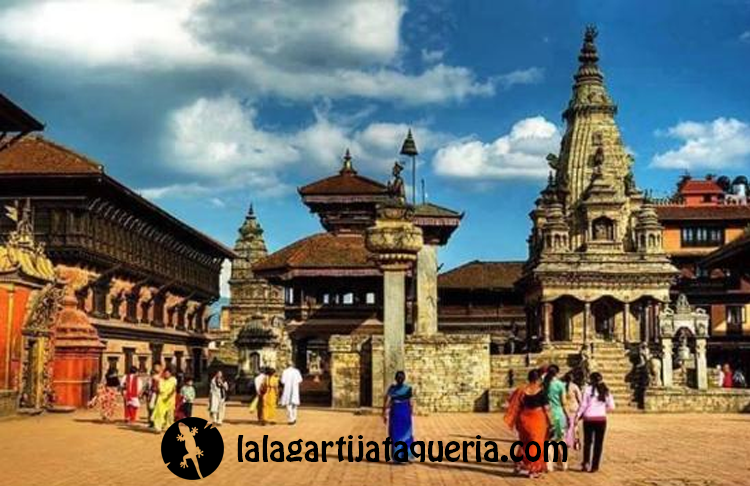
When planning a tour plan for Nepal, it’s essential to include a mix of activities that highlight the country’s natural beauty, adventure opportunities, and rich cultural heritage. From trekking the world-famous Himalayas to engaging in local festivals or trying out exhilarating adventure sports, Nepal offers something for every type of traveler. This guide will help you choose the best activities for your tour plan for Nepal to ensure an unforgettable experience.
Trekking Options
Nepal is a world-renowned trekking destination, home to some of the most famous trails in the world. Whether you’re an experienced trekker or a beginner, Nepal offers a variety of options to suit all levels.
- Everest Base Camp Trek: This iconic trek allows you to stand at the foot of the world’s highest mountain. It’s a challenging journey but rewards trekkers with breathtaking views and an immersive experience in Sherpa culture.
- Annapurna Circuit: A popular choice for its diverse landscapes, this trek takes you through lush forests, arid deserts, and high-altitude passes, offering spectacular mountain views.
- Langtang Valley Trek: For a more serene and less crowded experience, the Langtang Valley offers stunning views of glaciers and peaks, coupled with the opportunity to visit traditional Tamang villages.
Cultural Experiences and City Tours
For those interested in Nepal’s deep cultural roots, city tours and festival experiences provide an incredible glimpse into the country’s history and traditions.
- Kathmandu Valley: Explore the historical and religious landmarks of the capital, including Pashupatinath Temple, Swayambhunath Stupa, and Durbar Square. This is a cultural immersion into Nepal’s rich Hindu and Buddhist traditions.
- Patan and Bhaktapur: These ancient cities, located within the Kathmandu Valley, are known for their stunning architecture and cultural heritage. Both cities offer a more laid-back alternative to the bustling capital, with vibrant artisan markets and intricate temples to explore.
- Festivals: Plan your visit around festivals such as Dashain or Tihar to experience the vibrancy of Nepali culture, where communities come alive with dances, music, and religious ceremonies.
Adventure Sports
Nepal is an adventurer’s paradise, offering a wide range of thrilling outdoor activities set against the backdrop of the majestic Himalayas.
- Paragliding: Experience the exhilaration of flying over Pokhara, with breathtaking views of Phewa Lake and the Annapurna range. Paragliding here is one of the most popular adventure sports in Nepal.
- White-Water Rafting: Nepal’s rivers, such as the Trishuli and Bhote Koshi, provide exciting opportunities for rafting. These rivers range from mild to wild, catering to both beginners and seasoned rafters.
- Bungee Jumping: For adrenaline junkies, try bungee jumping at The Last Resort, near the Nepal-Tibet border, where you can leap from a 160-meter-high platform into a stunning river gorge.
By incorporating these activities into your tour plan for Nepal, you will enjoy a diverse and exciting travel experience, whether you’re seeking cultural enlightenment or adrenaline-pumping adventures.
Transportation and Accommodation in Nepal

Planning your tour plan for Nepal involves not just choosing what to see and do, but also figuring out how to get around and where to stay. Nepal’s diverse landscapes, from the towering Himalayas to lush lowland jungles, mean that transportation and accommodation options vary widely depending on your route and preferences. Whether you’re trekking in the mountains or exploring cultural sites in the cities, understanding how to navigate the country and where to rest is essential for a smooth trip.
How to Get Around Nepal
Transportation in Nepal can range from thrilling to challenging, depending on your destination and mode of travel. The country’s rugged terrain means that road conditions vary greatly, and certain areas are only accessible by flight.
- Domestic Flights: The quickest and most convenient way to travel between major cities like Kathmandu, Pokhara, and Lumbini is by domestic flights. These are ideal for saving time, especially when traveling to remote regions like Lukla for the Everest Base Camp trek. Keep in mind that weather can sometimes cause flight delays or cancellations.
- Buses: For budget travelers, long-distance buses are a common way to get around. Tourist buses with more comfort and safety features operate between major destinations like Kathmandu, Pokhara, and Chitwan. However, local buses, while cheaper, can be crowded and less reliable, especially on rough mountain roads.
- Private Vehicles: Renting a private car or jeep with a driver is another option. This provides flexibility and comfort, particularly when traveling to more remote areas or taking scenic routes through the mountains. While this option is pricier, it’s ideal for those seeking convenience without worrying about bus schedules.
- Taxis and Rickshaws: In cities like Kathmandu and Pokhara, taxis are readily available for short distances. Make sure to negotiate or use a meter. In more crowded areas, rickshaws offer a fun, eco-friendly way to explore local markets and narrow streets.
Accommodation Types
Nepal caters to a wide range of travelers with varied accommodation options, from budget-friendly lodges to luxury hotels. Depending on your itinerary and personal preferences, you’ll find plenty of options to match your tour plan for Nepal.
- Hotels: In cities like Kathmandu, Pokhara, and Chitwan, you’ll find a broad range of hotels, from budget guesthouses to 5-star international hotels. In popular trekking areas like Everest or Annapurna, there are also more basic hotels that cater to trekkers.
- Tea Houses: Along the trekking routes, tea houses are the most common form of accommodation. These are simple lodges that offer basic rooms and meals. While facilities may be modest, tea houses provide a welcoming environment and a chance to interact with fellow trekkers and locals.
- Resorts: For a more relaxing experience, resorts are available near popular nature and adventure destinations, such as Chitwan National Park and Nagarkot. These resorts often provide eco-friendly lodging with additional comforts like guided nature tours, spas, and fine dining.
- Monasteries and Homestays: For a unique cultural experience, you can stay in monasteries or homestays. These offer a chance to connect with local families or monks and gain a deeper understanding of Nepali culture and traditions. Homestays are particularly popular in rural areas, where you can participate in daily village life.
Understanding transportation and accommodation options will enhance your tour plan for Nepal, ensuring you have a comfortable and efficient journey through this incredible country.
Travel Tips and Safety Precautions

Planning your tour plan for Nepal requires more than just choosing your activities and routes. It’s essential to be mindful of health and safety precautions to ensure a smooth and enjoyable trip. Nepal’s rugged terrain, high altitudes, and cultural uniqueness make it an extraordinary destination, but it also requires travelers to be prepared and informed. Below are some essential tips to keep you safe and comfortable throughout your journey.
Health Recommendations and Vaccinations
When traveling to Nepal, it’s important to take health precautions, especially if you’re planning to trek in high altitudes or explore remote regions. Here are some key health recommendations for your tour plan for Nepal:
- Vaccinations: Make sure your routine vaccinations are up to date (such as measles, mumps, and rubella). In addition, you may need vaccines for hepatitis A, typhoid, tetanus, and rabies if you plan to visit rural areas or go trekking. Depending on the season and region, consider vaccination for Japanese encephalitis.
- Altitude Sickness: If you’re trekking above 2,500 meters, altitude sickness is a significant concern. Symptoms include headaches, nausea, and dizziness. To prevent it, acclimatize gradually, stay hydrated, and avoid alcohol. Carry acetazolamide (Diamox), which helps prevent altitude sickness.
- Water and Food Safety: Avoid drinking tap water in Nepal. Stick to bottled water or use water purification tablets. Make sure food is thoroughly cooked, and avoid raw vegetables or fruits that cannot be peeled.
Packing Essentials for Your Nepal Tour
Nepal’s varying climates and terrain require careful packing. Here’s a list of essentials to ensure you’re prepared for all conditions during your tour plan for Nepal:
- Clothing: Pack in layers, especially if you’re trekking. You’ll need warm clothes for cold mornings and evenings, even in summer, and lighter clothing for the warmer afternoons. Bring a waterproof jacket, thermal base layers, and a hat for sun protection.
- Footwear: Comfortable and sturdy trekking boots are essential for any trekking route. Make sure they are well broken in before your trip. Carry a pair of light sandals or shoes for relaxing in cities.
- Trekking Gear: A high-quality backpack, sleeping bag (if trekking), and a headlamp are must-haves. Don’t forget a water bottle with a filter or purification tablets, trekking poles, and a first aid kit.
- Documents and Essentials: Bring copies of your passport, travel insurance, and permits for trekking. Pack extra passport photos as they are often needed for permits and visas. Lastly, bring a universal travel adapter and power bank for your electronics.
Language and Cultural Etiquette
Respecting Nepal’s culture and customs is vital to having a respectful and immersive experience.
- Language: While Nepali is the official language, English is widely spoken in tourist areas. Learning a few basic phrases in Nepali, such as “Namaste” (a respectful greeting) and “Dhanyabad” (thank you), can go a long way.
- Cultural Etiquette: Dress modestly, especially when visiting temples and rural areas. Cover your shoulders and knees, and always remove your shoes before entering a temple or someone’s home. When giving or receiving items, use your right hand or both hands as a sign of respect.
- Religious Sensitivity: Nepal is home to both Hinduism and Buddhism, and visitors should be mindful of religious customs. Don’t point your feet towards religious icons, and always ask for permission before taking photos at sacred sites.
Conclusion: Crafting Your Perfect Nepal Tour Plan
Crafting the perfect tour plan for Nepal involves balancing adventure with cultural immersion while being mindful of the country’s health and safety guidelines. Whether you’re trekking through the Himalayas, exploring ancient temples in Kathmandu, or immersing yourself in local festivals, proper preparation is key to an enjoyable and memorable trip. By following these travel tips, you’ll be well-equipped for an enriching experience in this diverse and breathtaking destination.
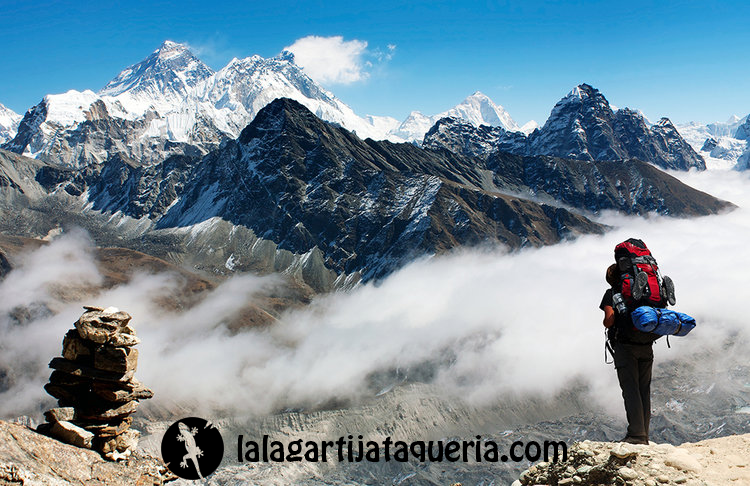
Nepal Travel Itinerary for an Epic 10-Day Adventure
If you’re dreaming of a journey through breathtaking landscapes, ancient cities, and thrilling outdoor experiences, this Nepal Travel Itinerary is the guide you need. Nepal is the perfect destination for adventurers, offering everything from trekking the mighty Himalayas to exploring the rich cultural heritage of its medieval towns. With this Nepal Travel Itinerary, we’ll help you plan the adventure of a lifetime, ensuring you experience the best this diverse country has to offer.
From the bustling streets of Kathmandu to the serene beauty of Pokhara and the wild landscapes of Chitwan, each location presents unique opportunities to delve into Nepal’s rich culture and embrace its natural wonders. Whether you have a week or two, this Nepal Travel Itinerary ensures you make the most of your time.
Ultimate Nepal Travel Itinerary for Adventurers

Nepal is a destination that caters to all types of adventurers. If you’re an adrenaline junkie, the peaks of the Himalayas offer an array of challenging treks, including the famous Everest Base Camp trek. For those seeking cultural experiences, the ancient cities of Kathmandu Valley house temples, shrines, and palaces that date back centuries. Here’s an ultimate Nepal travel itinerary designed to help you navigate the must-visit destinations and thrilling activities in Nepal.
To get the best experience out of your Nepal Travel Itinerary, consider dividing your time between these main regions:
- Kathmandu Valley: Immerse yourself in Nepal’s rich history and culture with visits to heritage sites like Durbar Square, Swayambhunath, and Pashupatinath.
- Pokhara: Experience adventure activities like paragliding, boating on Phewa Lake, and trekking to viewpoints such as Sarangkot.
- Chitwan National Park: For wildlife enthusiasts, Chitwan offers jungle safaris where you can spot the one-horned rhinoceros, Bengal tigers, and diverse birdlife.
With this structured Nepal Travel Itinerary, your adventure will be packed with excitement and exploration.
Introduction to Nepal: Gateway to Adventure
Nepal, often known as the “Gateway to the Himalayas,” is a paradise for adventurers and nature lovers. From the bustling streets of Kathmandu to the serene landscapes of Pokhara and the untouched wilderness of Chitwan, the country offers an incredible blend of history, culture, and outdoor adventures. The diversity of activities and destinations in Nepal makes it an ideal choice for travelers looking to dive deep into the wonders of South Asia.
When planning your Nepal Travel Itinerary, remember that each region offers a distinct experience. Kathmandu introduces you to the spiritual side of Nepal with its centuries-old temples and shrines. Pokhara provides a tranquil escape, surrounded by lakes and mountains. For wildlife lovers, Chitwan National Park presents a thrilling chance to encounter some of Asia’s most impressive animals. Crafting your Nepal Travel Itinerary around these locations will ensure a memorable and fulfilling trip.
Best Time to Visit Nepal
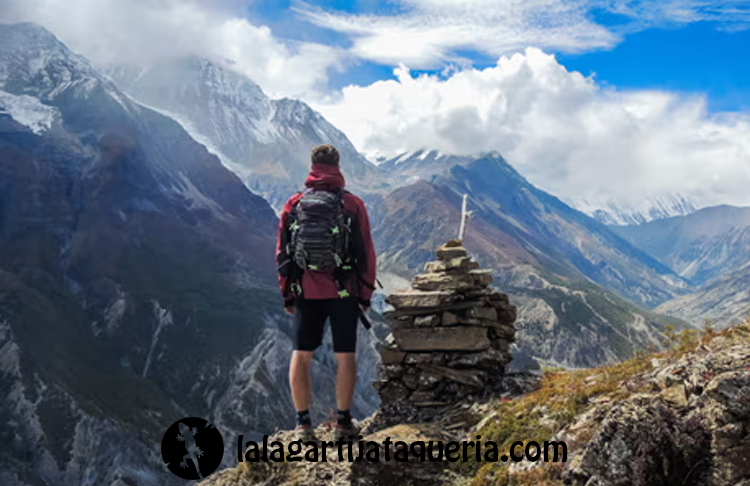
When crafting your Nepal Travel Itinerary, it’s essential to consider the best time to visit to make the most of your adventure. Nepal’s climate varies greatly depending on the region and altitude, which makes planning your trip according to the seasons crucial. While Nepal is a year-round destination, the most popular time to visit is during the autumn (October-November) and spring (March-April) months. During these periods, you’ll find clear skies, pleasant temperatures, and excellent conditions for trekking and outdoor activities.
For adventurers planning to trek in the Himalayas, these months offer the best visibility of Nepal’s stunning mountain ranges. If wildlife safaris in Chitwan National Park or visiting cultural sites in Kathmandu are more your style, you’ll also benefit from mild weather and fewer chances of rain. Whether you’re trekking to Everest Base Camp, exploring Pokhara, or wandering the ancient streets of Bhaktapur, planning your Nepal Travel Itinerary around these seasons will enhance your overall experience.
If you’re flexible with your dates, off-season travel in Nepal during the monsoon or winter can also be rewarding. These periods are less crowded, and while the weather can be more challenging, it offers a more peaceful and unique experience.
Seasons and Weather Conditions
Understanding Nepal’s weather patterns will help you decide the ideal time for your Nepal Travel Itinerary. Nepal experiences four primary seasons:
- Autumn (October-November): This is the best time to visit Nepal for clear skies and perfect trekking conditions. The temperatures are moderate, making it comfortable for outdoor activities, and the landscapes are lush from the preceding monsoon season.
- Spring (March-April): Spring is another excellent time to visit, especially for those who want to see Nepal’s vibrant blooming rhododendrons and enjoy pleasant weather. It’s a great time for trekking, and the visibility of the mountains remains impressive.
- Monsoon (June-September): While the monsoon season brings heavy rainfall, especially in the lower regions, it’s also a quieter period for travelers. The rain can cause landslides and make trekking trails slippery, but if you’re more interested in cultural exploration or are traveling to rain-shadow regions like Upper Mustang, this season still has its charm.
- Winter (December-February): Winter in Nepal means colder temperatures, especially in the higher altitudes. However, lower regions such as Kathmandu and Chitwan still offer mild weather, and it’s an excellent time to visit if you prefer fewer crowds and don’t mind bundling up.
Avoiding the Monsoon Season
When planning your Nepal Travel Itinerary, one of the key considerations is the monsoon season, which typically lasts from June to September. During this period, heavy rains can lead to challenging travel conditions, including muddy trails and increased risk of landslides, particularly in mountainous areas. While this season has its unique beauty, with lush landscapes and fewer tourists, it may not be ideal for those looking for outdoor adventures or trekking.
If your primary goal is to trek in the Himalayas or engage in outdoor activities, it’s advisable to avoid the monsoon season altogether. Instead, consider scheduling your trip during the autumn or spring months when the weather is more favorable. This will allow you to fully enjoy the breathtaking scenery and vibrant culture without the disruptions caused by heavy rainfall.
By being mindful of the monsoon season while planning your Nepal Travel Itinerary, you can ensure a smoother, more enjoyable experience in this stunning country.
Essential Travel Preparations
Preparing for your trip to Nepal involves several essential steps that can significantly enhance your travel experience. From understanding the local customs to ensuring you have the necessary documentation, a little preparation goes a long way. A well-thought-out Nepal Travel Itinerary includes not only sightseeing but also practical preparations that will set you up for a successful adventure.
Before you embark on your journey, it’s important to gather information about what to expect and how to prepare. From booking accommodations and planning transportation to familiarizing yourself with local customs and traditions, every detail contributes to a smoother trip. This section will cover vital travel preparations you need to consider before arriving in Nepal.
Visa and Entry Requirements
One of the first steps in your Nepal Travel Itinerary should be understanding the visa and entry requirements for Nepal. Most travelers will need a visa to enter the country, which can be obtained either in advance or upon arrival at the airport. Here are some key points to keep in mind:
- Visa on Arrival: Most nationalities can obtain a visa on arrival at Tribhuvan International Airport in Kathmandu. It’s advisable to have a passport-sized photo and sufficient cash (in US dollars or Nepalese rupees) to cover the visa fee.
- Tourist Visa: The tourist visa is typically valid for 15, 30, or 90 days, depending on your travel needs. Make sure to check the latest regulations as they can change.
- Passport Validity: Ensure your passport is valid for at least six months beyond your planned departure date from Nepal. This is a requirement for entry.
- COVID-19 Regulations: Depending on current health guidelines, you may need to show proof of vaccination or a negative test result, so check the latest requirements before your trip.
By ensuring you have the correct visa and entry documentation, you’ll avoid any unexpected hassles and can focus on enjoying your Nepal Travel Itinerary to the fullest.
Perfect 10-Day Itinerary for Adventure Seekers
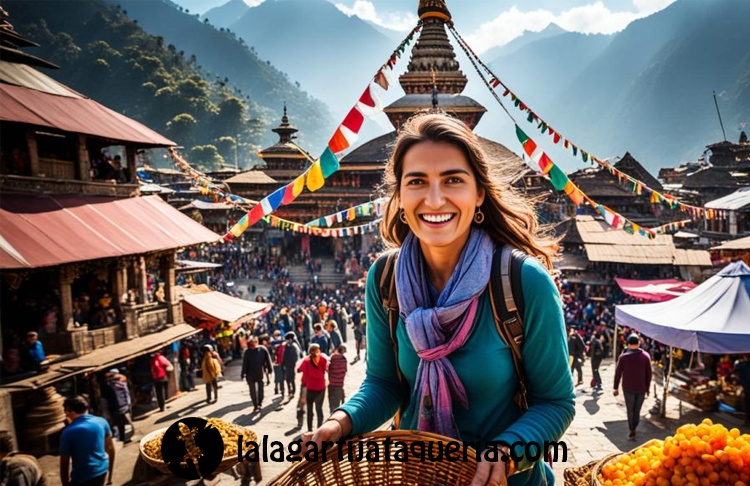
For those eager to experience the thrill and beauty of Nepal, this perfect 10-day itinerary is designed specifically for adventure seekers. It combines cultural exploration with outdoor activities, ensuring you get a comprehensive taste of what this remarkable country has to offer. From the vibrant streets of Kathmandu to the stunning views of the Himalayas, this itinerary will guide you through an unforgettable journey that highlights both adventure and culture.
Each day of this 10-day itinerary is carefully crafted to balance trekking, sightseeing, and relaxation, allowing you to fully immerse yourself in Nepal’s diverse landscapes and rich traditions. Get ready to embark on an adventure filled with breathtaking scenery, unique experiences, and memories that will last a lifetime!
Day 1-2: Kathmandu Exploration
Your adventure begins in Kathmandu, the bustling capital of Nepal. Spend your first two days delving into the city’s rich history and vibrant culture. Here are some highlights for your Nepal Travel Itinerary:
- Day 1: Arrive in Kathmandu and check into your hotel. Spend your day exploring the UNESCO World Heritage Sites, including the iconic Swayambhunath (Monkey Temple), where you can enjoy panoramic views of the city. Later, visit Kathmandu Durbar Square, home to stunning temples and royal palaces. Don’t forget to savor local cuisine at a traditional restaurant.
- Day 2: Dedicate this day to exploring Pashupatinath Temple, one of the holiest Hindu sites, followed by a visit to Boudhanath Stupa, a massive stupa and a center for Tibetan Buddhism. Take a leisurely stroll through the Thamel district, where you can shop for souvenirs and experience the lively atmosphere.
These first two days in Kathmandu set a solid foundation for your Nepal Travel Itinerary, combining culture, spirituality, and the warmth of local hospitality.
Day 3-4: Nagarkot Sunrise and Bhaktapur
On Day 3, embark on a scenic drive to Nagarkot, a popular hill station known for its breathtaking sunrise views over the Himalayas. Here’s how to plan these two days:
- Day 3: Depart early from Kathmandu to reach Nagarkot. Check into a hotel with a view and spend the afternoon hiking nearby trails, immersing yourself in the natural beauty of the region. As night falls, prepare for an early morning wake-up to catch the stunning sunrise.
- Day 4: Wake up before dawn to witness a spectacular sunrise over the snow-capped peaks of the Himalayas. After soaking in the views, head to Bhaktapur, another UNESCO World Heritage Site. Explore its medieval squares, ancient temples, and the famous Bhaktapur Durbar Square. Be sure to try the local delicacy, king curd (juju dhau), before returning to Kathmandu.
Day 5-6: Pokhara – The Adventure Hub
On Day 5, head to Pokhara, the adventure capital of Nepal, which is located about 200 km from Kathmandu. Known for its stunning natural beauty and thrilling activities, this destination is perfect for adrenaline junkies and nature lovers alike.
- Day 5: Upon arrival in Pokhara, take some time to relax by the peaceful Phewa Lake, where you can rent a boat or simply enjoy the stunning views of the Annapurna mountain range. In the afternoon, explore the vibrant lakeside town and its markets. As the sun sets, consider visiting the World Peace Pagoda, which offers a panoramic view of the city, lake, and mountains.
- Day 6: Get ready for a day full of adventure! Pokhara offers numerous activities such as paragliding, zip-lining, or even bungee jumping. For those seeking something less extreme, you can trek to Sarangkot to catch the sunrise or explore the fascinating Gupteshwor Cave and Devi’s Fall. With so many options, your Nepal Travel Itinerary will be brimming with adventure in Pokhara.
These two days will provide you with plenty of exhilarating experiences, making Pokhara a highlight of your Nepal Travel Itinerary.
Day 7-8: Chitwan National Park Safari
After your adventures in Pokhara, travel south to Chitwan National Park, a UNESCO World Heritage Site and one of the best places in Asia to spot wildlife. Chitwan offers a unique jungle safari experience, far removed from the mountainous regions of Nepal.
- Day 7: Arrive at Chitwan and settle into one of the many jungle lodges. In the afternoon, you can embark on a jungle walk or a jeep safari, where you’ll have the opportunity to see wildlife such as one-horned rhinos, elephants, leopards, and, if you’re lucky, the elusive Bengal tiger.
- Day 8: Start the day with a peaceful canoe ride along the Rapti River, where you can spot crocodiles and birdlife. Later, visit the Elephant Breeding Center or enjoy a cultural experience with a local Tharu dance performance. The diverse activities in Chitwan make this a fantastic addition to your Nepal Travel Itinerary.
These two days in Chitwan provide a thrilling contrast to the mountainous adventures, offering a glimpse into Nepal’s rich wildlife and jungle ecosystem.
Day 9-10: Lumbini – Birthplace of Buddha
Conclude your Nepal Travel Itinerary with a visit to Lumbini, the birthplace of Buddha, located in the Terai plains of southern Nepal. This sacred site is a major pilgrimage destination for Buddhists worldwide.
- Day 9: After traveling to Lumbini, spend the afternoon visiting the Maya Devi Temple, where Buddha is said to have been born. Wander through the Lumbini Garden, exploring the various stupas and monasteries built by Buddhist communities from around the world.
- Day 10: Take a final day to explore the Lumbini Monastic Zone, where you can find monasteries from countries like Thailand, China, and Japan. Each structure reflects the architectural style and traditions of its country. End your trip by meditating or reflecting at this peaceful, spiritually rich site.
Lumbini offers a serene and contemplative end to your adventurous Nepal Travel Itinerary, providing both a cultural and spiritual experience to conclude your journey.
Packing List for a Nepal Adventure
Preparing for your adventure in Nepal requires careful consideration of what to pack. A well-thought-out packing list is essential to ensure you’re equipped for the diverse activities and varying climates you’ll encounter during your Nepal Travel Itinerary. Whether you’re trekking through the Himalayas, exploring cultural sites, or enjoying wildlife safaris, having the right gear will enhance your experience and keep you comfortable throughout your journey.
This section will help you compile a comprehensive packing list tailored specifically for adventure seekers. From clothing to essential gear, being prepared will allow you to focus on enjoying all that Nepal has to offer without worrying about forgotten items.
Essentials for Trekking and Adventure
When packing for your Nepal Travel Itinerary, especially if trekking is on your agenda, certain essentials are crucial for a safe and enjoyable experience. Here’s a list of items you should consider bringing:
- Footwear: Invest in a good pair of trekking boots with ankle support, as well as comfortable sandals for relaxing after hikes.
- Clothing: Layering is key. Bring moisture-wicking base layers, insulating mid-layers (like fleece), and a waterproof outer layer. Don’t forget warm hats, gloves, and thermal socks for colder temperatures.
- Backpack: A comfortable daypack for day hikes, ideally with hydration options, is essential.
- Trekking Poles: These can provide extra support on uneven terrain and reduce strain on your knees.
- First Aid Kit: Include basic supplies like adhesive bandages, antiseptic wipes, and any personal medications.
- Water Purification: A portable water filter or purification tablets is vital for ensuring safe drinking water during treks.
- Sun Protection: Sunscreen, lip balm with SPF, sunglasses, and a wide-brimmed hat will protect you from the intense sun, especially at higher altitudes.
- Personal Items: Bring a lightweight towel, toiletries, and any other personal comfort items you might need.
Responsible Travel in Nepal
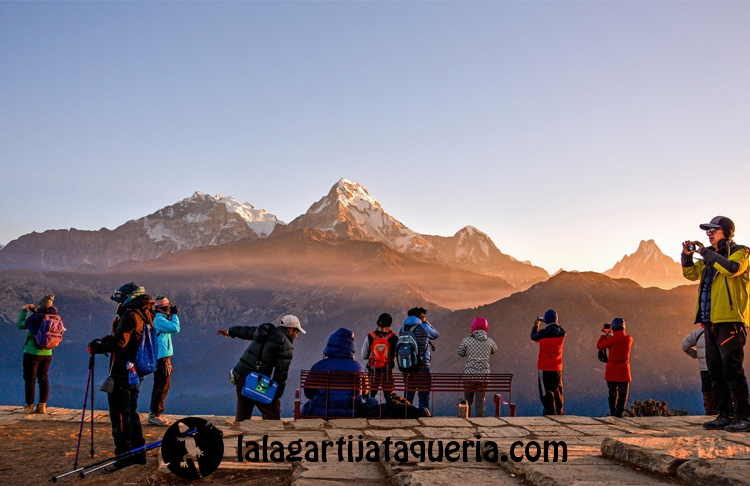
As you plan your Nepal Travel Itinerary, it’s important to consider responsible travel practices. Nepal’s natural beauty, cultural heritage, and local communities are its greatest treasures, and ensuring that your visit has a positive impact is key to preserving these for future generations. Being a responsible traveler means respecting the local environment, supporting the local economy, and minimizing your carbon footprint.
Nepal’s fragile ecosystems, particularly in mountainous regions, can be vulnerable to the impact of mass tourism. Additionally, respecting the culture and traditions of the Nepalese people plays a significant role in responsible travel. Whether you are trekking in the Himalayas, visiting religious sites, or staying in local villages, adopting sustainable practices is crucial for a positive, respectful travel experience.
Eco-Friendly Travel Practices
To make your Nepal Travel Itinerary as eco-friendly as possible, here are some practical tips:
- Minimize Plastic Use: Nepal faces significant plastic waste challenges, particularly in remote trekking areas. Avoid single-use plastics by carrying a reusable water bottle and using water purification tablets or filters.
- Leave No Trace: When trekking, ensure you carry all your waste out with you. Avoid littering on trails and in villages, and follow the “leave no trace” principle to help preserve Nepal’s natural beauty.
- Support Local Businesses: Opt for locally owned accommodations, restaurants, and shops. This supports the local economy and helps you connect with authentic Nepalese culture.
- Respect Wildlife and Nature: Whether you’re visiting Chitwan National Park or trekking through the Himalayas, be mindful of the local wildlife. Avoid disturbing animals, and stick to designated trails to prevent damage to fragile ecosystems.
- Cultural Respect: When visiting religious and cultural sites, dress modestly and follow local customs. Always ask permission before taking photos of people, and be respectful of sacred spaces.
By incorporating these eco-friendly practices into your Nepal Travel Itinerary, you can help reduce the environmental and cultural impact of tourism while enjoying a meaningful and responsible adventure.
Conclusion: Your Adventure Awaits
With your Nepal Travel Itinerary now complete, you’re ready to embark on an unforgettable journey through one of the most stunning and culturally rich countries in the world. From the towering peaks of the Himalayas to the serene plains of the Terai, Nepal offers something for every type of traveler. Whether you’re trekking through awe-inspiring landscapes, encountering wildlife in Chitwan National Park, or exploring the birthplace of Buddha in Lumbini, your adventure will be filled with discovery, excitement, and lasting memories.
By traveling responsibly and embracing the diversity of experiences Nepal has to offer, you will not only enjoy a trip of a lifetime but also contribute to the preservation of this incredible destination for future visitors. Your adventure awaits — Nepal is ready to inspire and challenge you in the most rewarding ways possible.